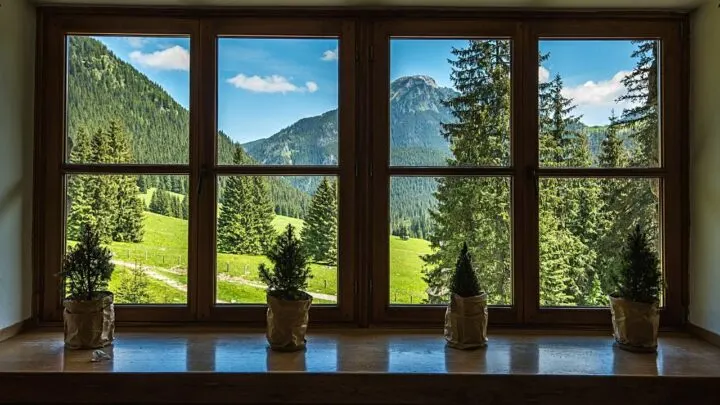Caring for plants isn’t as easy as it sounds, especially if you have little to no experience with gardening and planting.
However, things become easy when you focus on the plants’ basic requirements, such as light, water, and soil type.
Growing plants indoors may be slightly trickier than outdoors, as the light levels may be compromised.
Northeast-facing windows offer ideal light settings for several plants. The light coming in through this direction is indirect but enough to encourage plants to reach their full potential in terms of growth and blooming.
Let’s take a look at some of the beauties that thrive under northeast-facing windows!
30 Houseplants for Northeast-Facing Window
- Golden Pothos
- Peace lily
- ZZ top
- Moth orchid
- Snake plant
- Chinese evergreen
- Pinstripe calathea
- Heart-leafed Philodendron
- Bromeliads
- Swiss cheese plant
- Maidenhair fern
- Nerve plant
- Cyclamen
- Boston fern
- Cast iron plant
- Spider plant
- Never never plant
- Bird’s nest fern
- Umbrella tree
- Red begonia
- Baby rubber plant
- Pothos jade
- Dracaena lisa cane
- Benjamin fig
- English ivy
- Staghorn fern
- Gardenia
- Pilea peperomiodes
- Alocasia x amazonica polly
- Streptocarpus

30 Houseplants for Northeast-Facing Window
30 Houseplants for Northeast-Facing Window
1. Golden Pothos

Golden Pothos tops the list of popular plants for northeast-facing windows
Golden Pothos, botanically known as Epipremnum Aureum, is among the most popular plants when it comes to northeast-facing window plants.
It goes by several names, including Hunter’s robe, Cylon creeper, Money plant, and Silvervine.
It is a flowering plant that grows exceptionally well in front of northeast-facing windows indoors.
Its foliage can only tolerate mild to moderate sunlight, former in the mornings and latter in the evenings.
The pothos plant’s leaves scorch if exposed to direct sunlight for long hours. In contrast, the foliage travels down as trailing vines when under the ideal light settings.
The small leaves can change to a more mature form of leaves that can reach 18 inches in length (45cm) according to the University of Florida.
Add this beauty to your houseplants collection for a sophisticated look.
- Scientific name: Epipremnum aureum
- Light requirements: mild to moderate
- Watering requirements: low to moderate
- Growth rate: Moderate
- Temperature: 60 to 85 degrees Fahrenheit
- pH: 6.1 to 6.5
- Care: low to moderate
2. Peace Lily
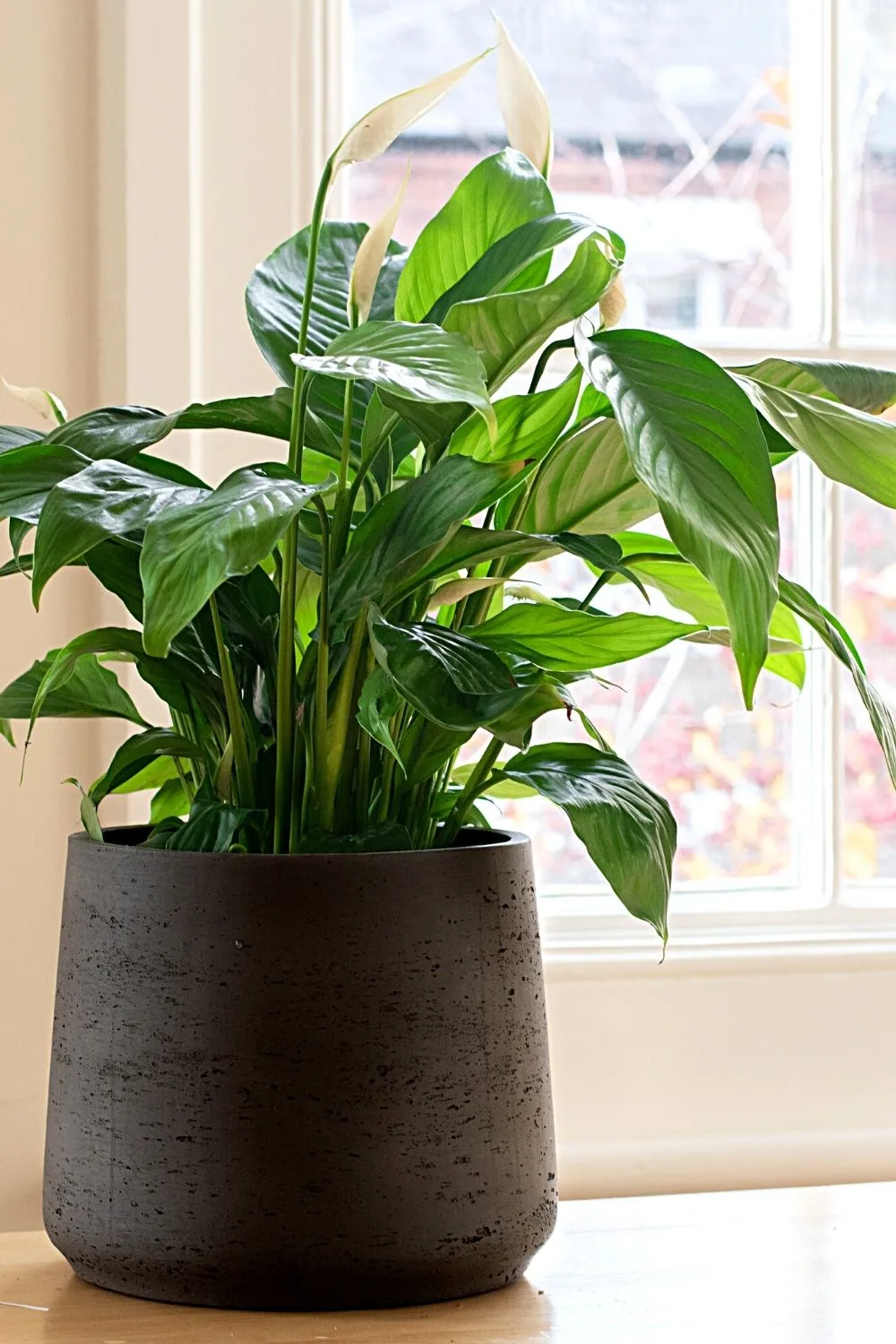
Peace Lily is another gorgeous plant to place by your northeast-facing window
This plant brings to your house exactly what its name suggests-peace. It is an elegant, 40 species plant with white foliage that wraps around an elongated stem.
This beauty is often seen decorating office tables and bedside tables because it likes moderate conditions, including dappled sunlight.
Northeast-facing windows only allow a specific amount of sunlight to come into contact with the peace lily. Moreover, they need water to survive and some organic, light soil.
However, please ensure you do not completely block out its light as the Peace Lily will not bloom in such settings.
The leaves of this plant are more sensitive than the snake plant, another great plant on this list. Therefore, place the peace lily in filtered sunlight only.
- Scientific name: Spathiphyllum
- Light requirements: mild to moderate
- Watering requirements: low to moderate
- Growth rate: Moderate
- Temperature: 68 to 85 degrees Fahrenheit
- pH: 5.8 t 6.5
- Care: low to moderate
3. ZZ Top
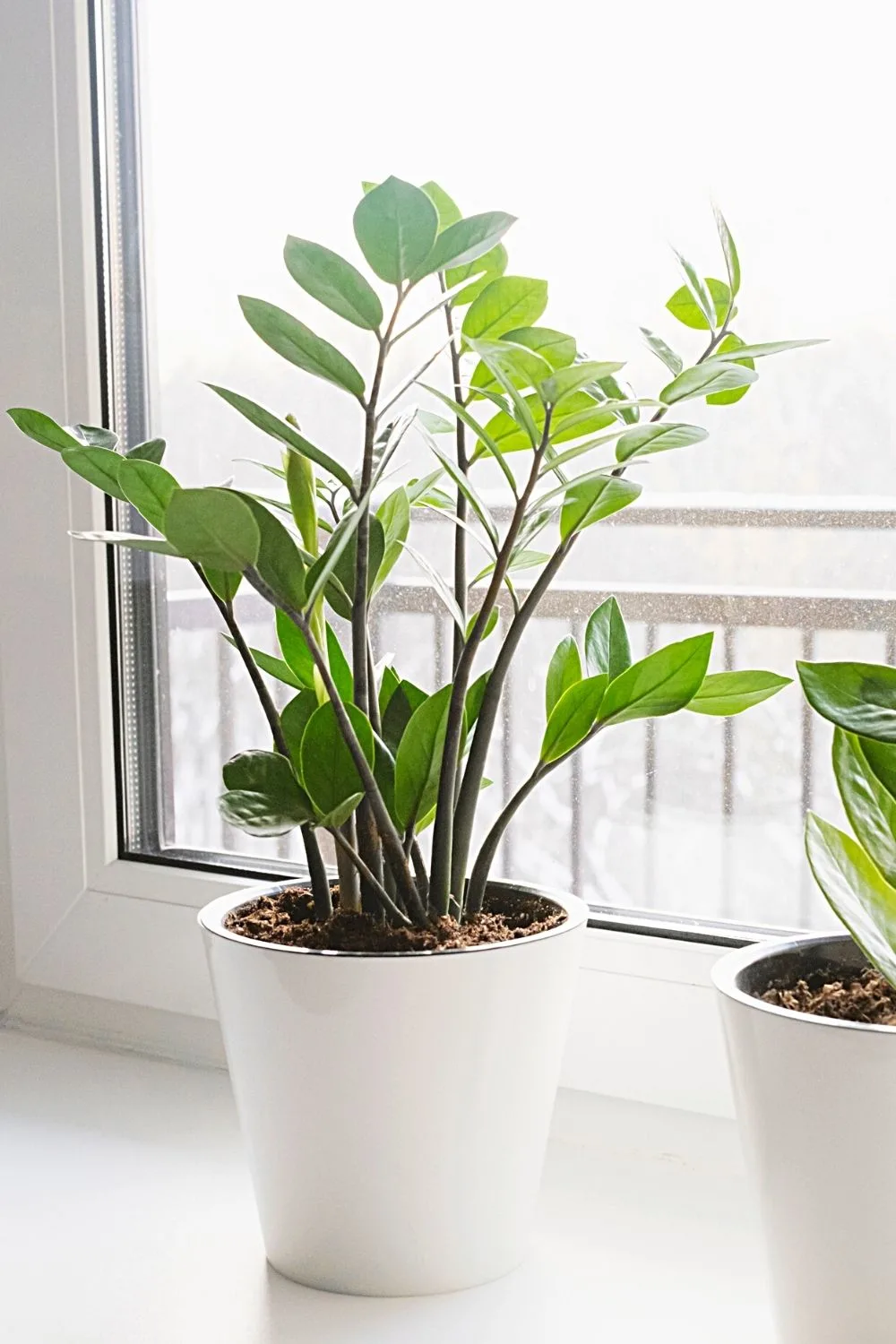
ZZ top is one of the plants that stands out the most when placed in northeast-facing windows
Next up, we have the ZZ top plant, a beauty that often stands out due to its elegance. Its name is inspired by its Latin classification, Zamioculas zamiifolia.
This plant thoroughly enjoys bright, dappled sunlight. It likes occasional watering and fertile, light soils.
These species hail from Africa and grow really well next to northeast-facing windows since only filtered light comes in.
For the ZZ top plant, you can even opt for a barely lit room. However, the leaves may dry out in such conditions.
So, try to place it in its ideal conditions.
Moreover, the plant likes organic, fertile soils and frequent watering. But please remember to dry out the soil between watering.
Bring down the watering frequency in winters.
- Scientific name: Zamioculcas zamiifolia
- Light requirements: mild to moderate
- Watering requirements: low to moderate
- Growth rate: Moderate
- Temperature: 60 to 75 degrees Fahrenheit
- pH: 6 to 7
- Care: low to moderate
4. Moth Orchid

Moth orchid, which gets its name from the shape of its blooms, is another stunning plant to grow by your northeast-facing window
A stunning addition to your houseplants collection will be the Moth orchid. It is a vibrant plant with purple to magenta-colored leaves that have onlookers in awe.
The plant’s name is inspired by moths, as its blooms resemble them.
The Moth orchid is native to southeastern Asia and Australia, so it’s not used to extreme temperatures.
Place this beauty next to northeast-facing windows for only indirect sunlight to hit the plant.
If placed in inadequately lit areas for too long, the plant fails to bloom or collapses altogether. Hence, you can place your Moth orchid in front of southeast-facing windows as an alternative.
- Scientific name: Phalaenopsis
- Light requirements: mild to moderate
- Watering requirements: low to moderate
- Growth rate: Moderate
- Temperature: 70 to 80 degrees Fahrenheit
- pH: 6 to 7
- Care: low to moderate
5. Snake Plant
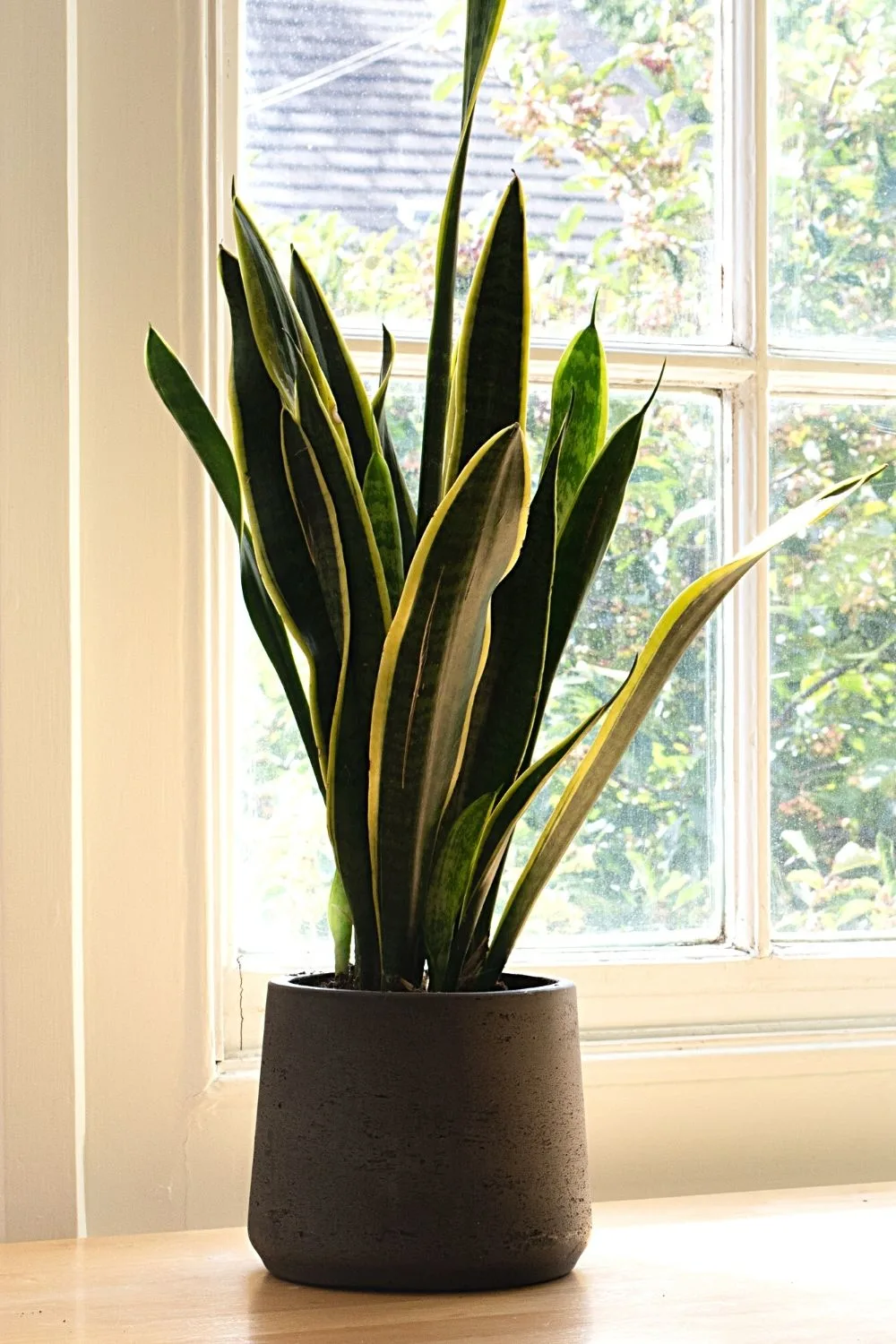
Snake plant, known for its yellow or white pinstripes on dark green foliage, is another great addition to your northeast-facing window collection
The Snake Plant, also known as mother-in-law’s tongue, Viper’s bowstring, Saint George’s Sword, and Dracaena trifasciata (or Sansevieria trifasciata), is a member of the Asparagus family.
A lot of gardeners look for these plants due to their signature white and yellow stripes combined with dark green foliage.
These plants thrive in partial sunlight as their leaves are pretty sensitive to overexposure.
Another reason for filtered sunlight is that the leaves can only take a certain amount of sunlight. Anything over the saturation limit bleaches the leaves.
- Scientific name: Dracaena trifasciata
- Light requirements: mild to moderate
- Watering requirements: low to moderate
- Growth rate: Moderate
- Temperature: 60 to 75 degrees Fahrenheit
- pH: 4.5 to 8.5
- Care: low to moderate
6. Chinese Evergreen
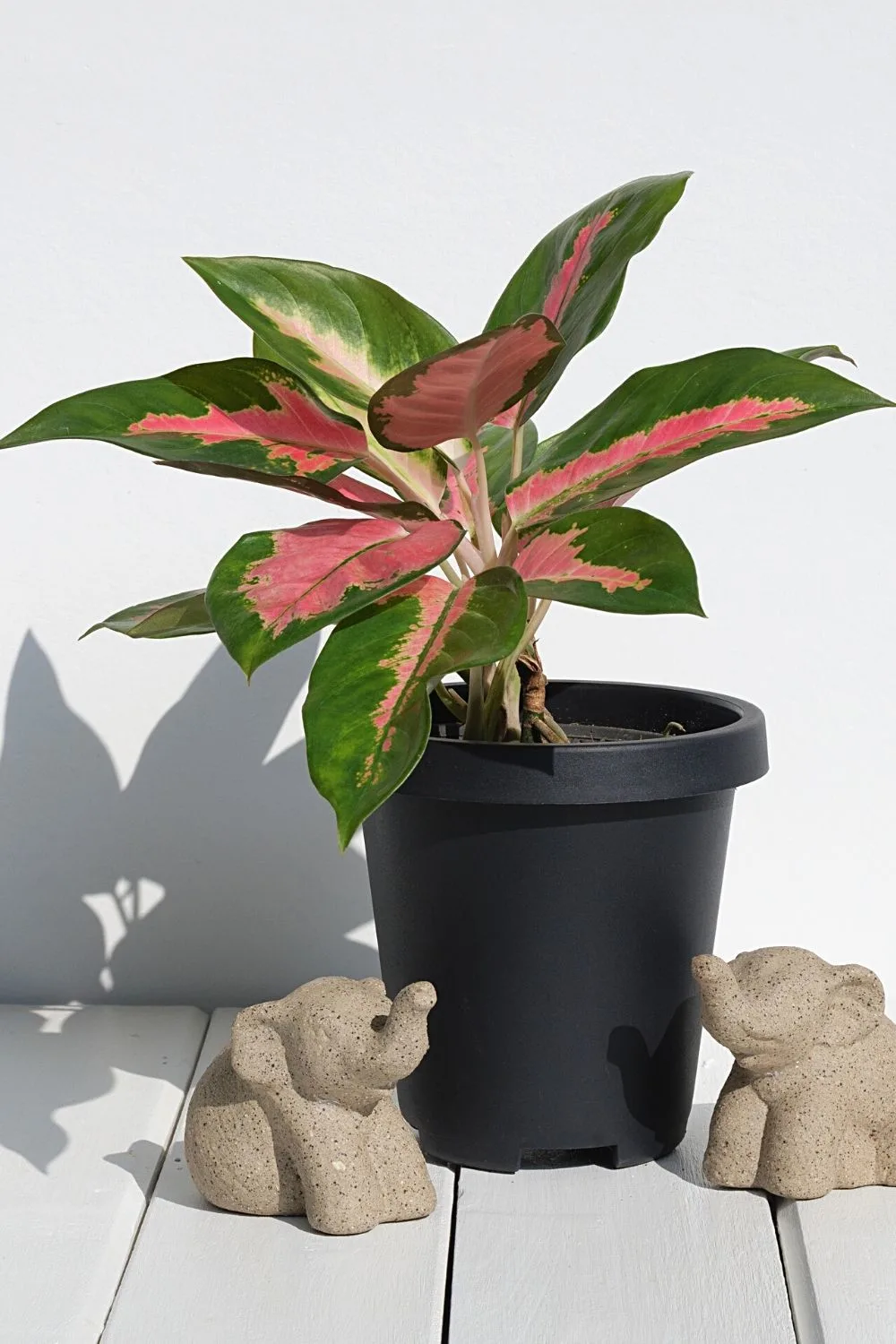
If you want to add a plant with a splash of red on your northeast-facing window, the Chinese evergreen is your plant of choice
A stunning plant you can have in your houseplants collection is the Chinese evergreen. This beauty has unique leaves with red patterns prominent against dark green foliage.
It thrives in filtered sunlight offered best by northeast windows.
Natives of tropical and subtropical lands, the Chinese evergreen plant likes temperate environments.
Additionally, they can tolerate a wide range of conditions, such as different light levels, temperatures, and soil types.
- Scientific name: Aglaonema commutatum
- Light requirements: mild to moderate
- Watering requirements: low to moderate
- Growth rate: Moderate
- Temperature: 68 to 77 degrees Fahrenheit
- pH: 5.5 to 6.5
- Care: low to moderate
7. Pinstripe Calathea
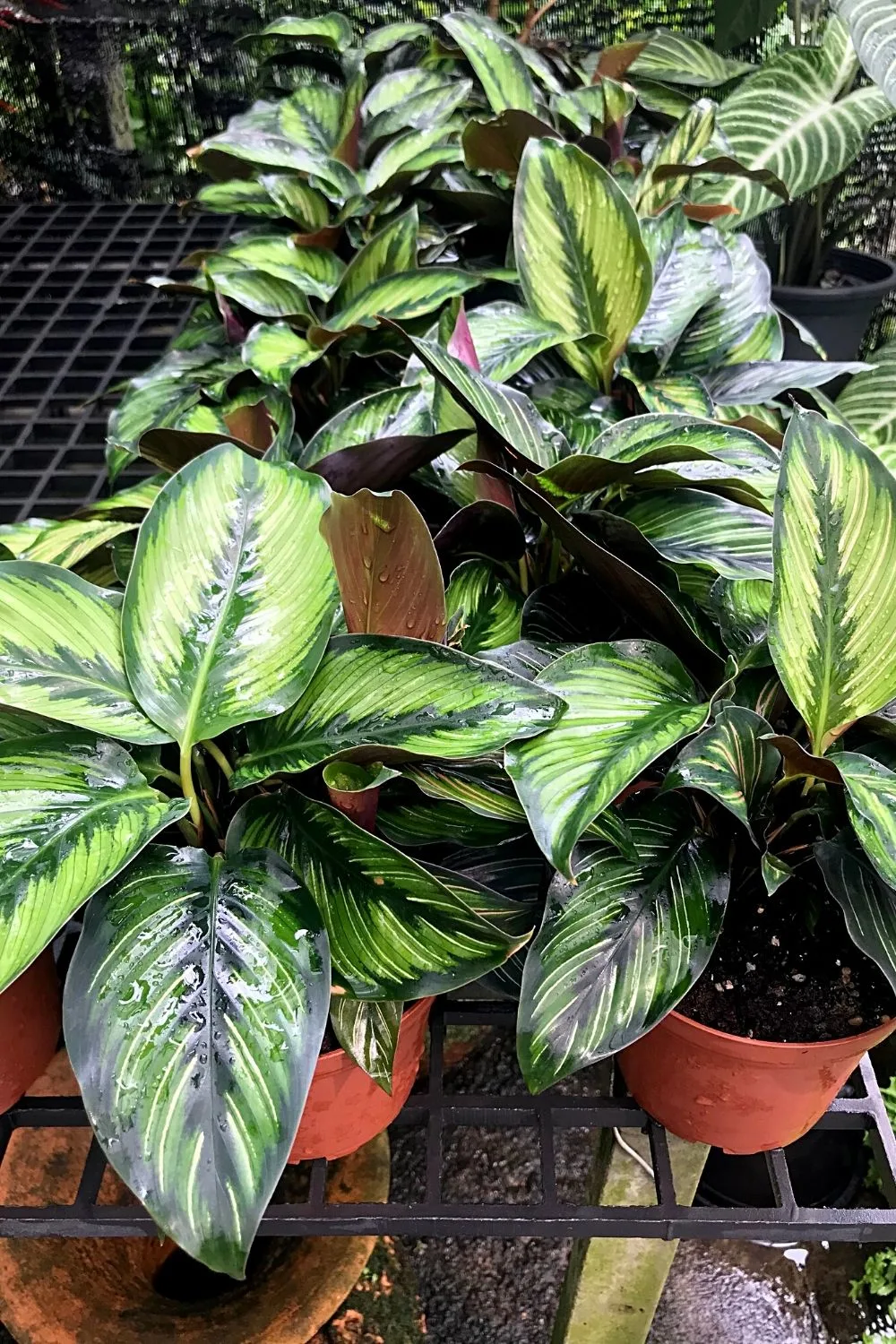
Pinstripe calathea is one of the plants that has an easy-to-care for temperament among northeast-facing window plants
Another interesting addition to your northeast-facing plants can be Pinstripe calathea. It is a member of the prayer plants family and a popular choice among those looking for South American plants.
This perennial is widely known for its pretty decadent leaves and easy care.
Its primary growth factor is sunlight; place it in dappled sunlight for the plant to grow optimally.
- Scientific name: Calathea ornata
- Light requirements: mild to moderate
- Watering requirements: low to moderate
- Growth rate: Moderate
- Temperature: 65 to 75 degrees Fahrenheit
- pH: 6.5 to 7
- Care: low to moderate
8. Heart-leafed Philodendron
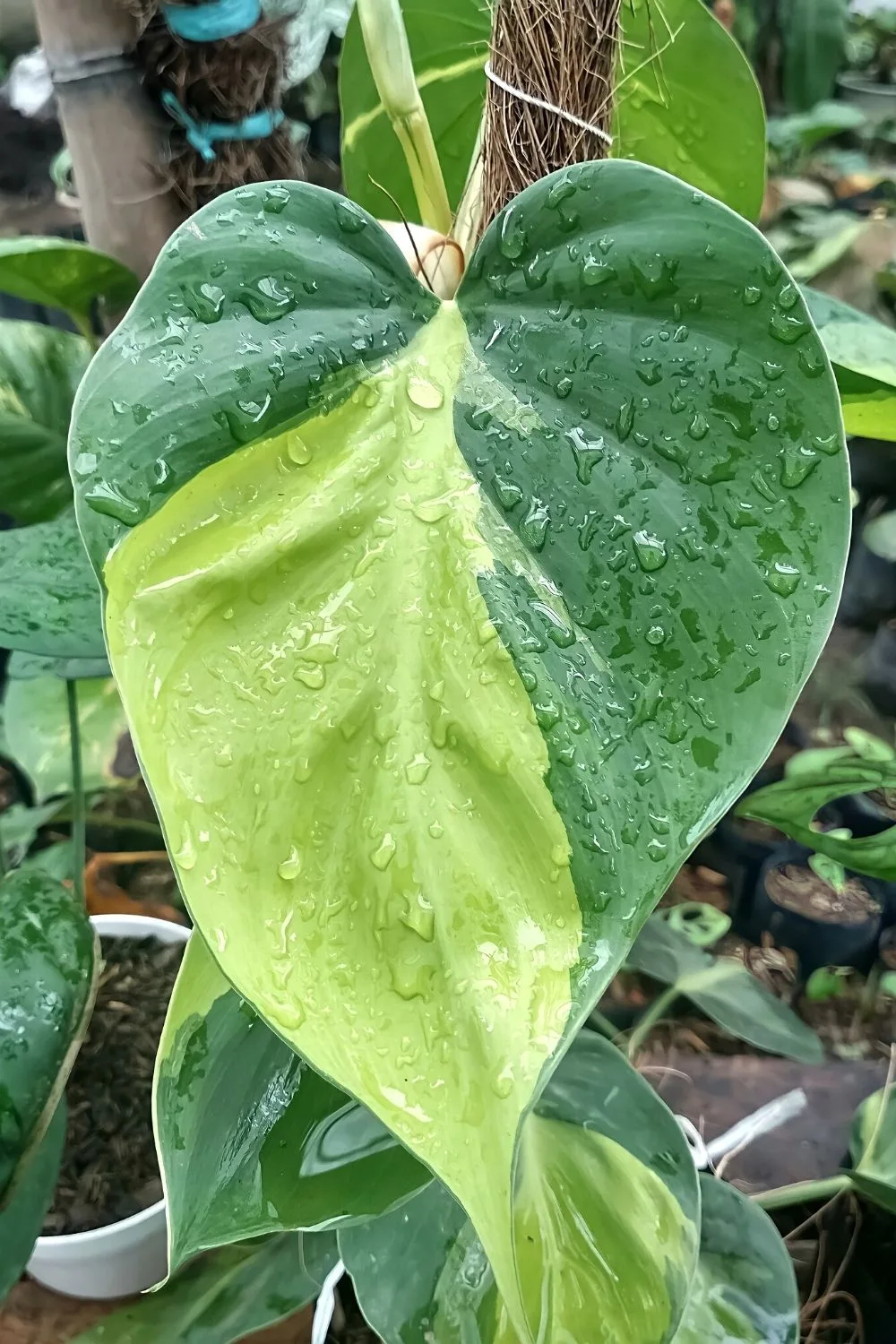
Heart-leafed Philodendron is another favorite plant to grow by northeast-facing windows
This list would be incomplete without a classic philodendron. The heart-leafed philodendron is a top favorite when it comes to northeast-facing growing plants.
These climbers dominate the central American tropical rainforests, often seen growing along large tree trunks.
Heart-leafed philodendron’s glossy heart-shaped leaves have earned them their popularity.
Furthermore, their hardy nature enables them to survive the toughest conditions, including mineral deficiencies and mild infections.
Place them in diffused sunlight and water occasionally for the healthiest growth.
- Scientific name: Philodendron hederaceum
- Light requirements: mild to moderate
- Watering requirements: low to moderate
- Growth rate: Moderate
- Temperature: 65 to 80 degrees Fahrenheit
- pH: 5.5 to 6
- Care: low to moderate
9. Bromeliads
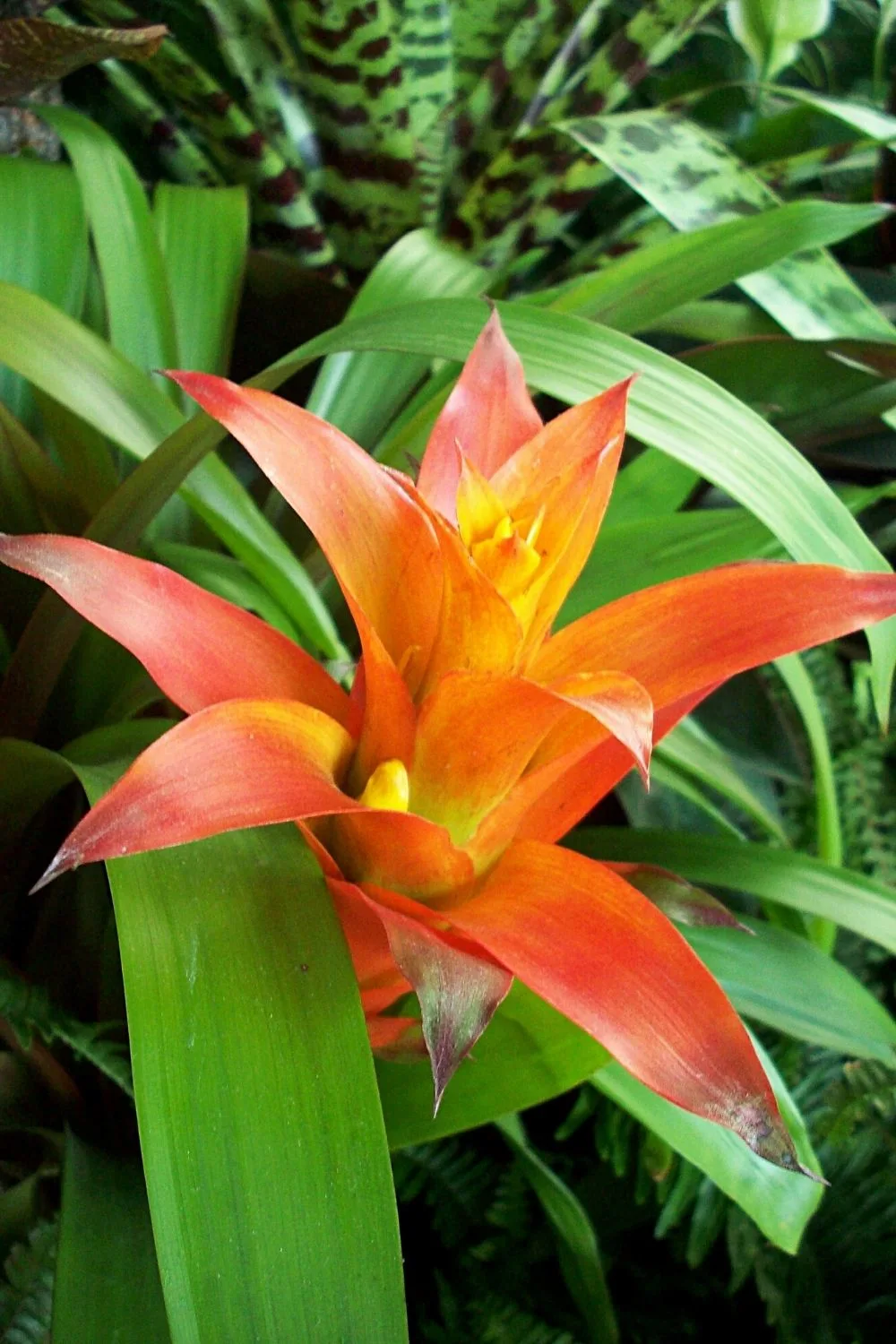
Bromeliads love the indirect light they’re receiving when placed by northeast-facing windows
The bromeliads are a family, not a species. They are mostly found in American tropical regions as monocots and enjoy mild conditions.
This exotic family showcases a myriad of unique pigments in their flowers and foliage. But for bromeliads to grow beautifully, they must receive filtered sunlight.
Northeast-facing windows offer indirect sunlight for these beauties to reach their maximum potential.
You can choose one from a range of Bromeliads varieties, some managing with the minimum, while others require extensive care.
- Scientific name: Bromeliaceae
- Light requirements: mild to moderate
- Watering requirements: low to moderate
- Growth rate: Moderate
- Temperature: 60 to 85 degrees Fahrenheit
- pH: 4 to 7
- Care: low to moderate
10. Swiss Cheese Plant
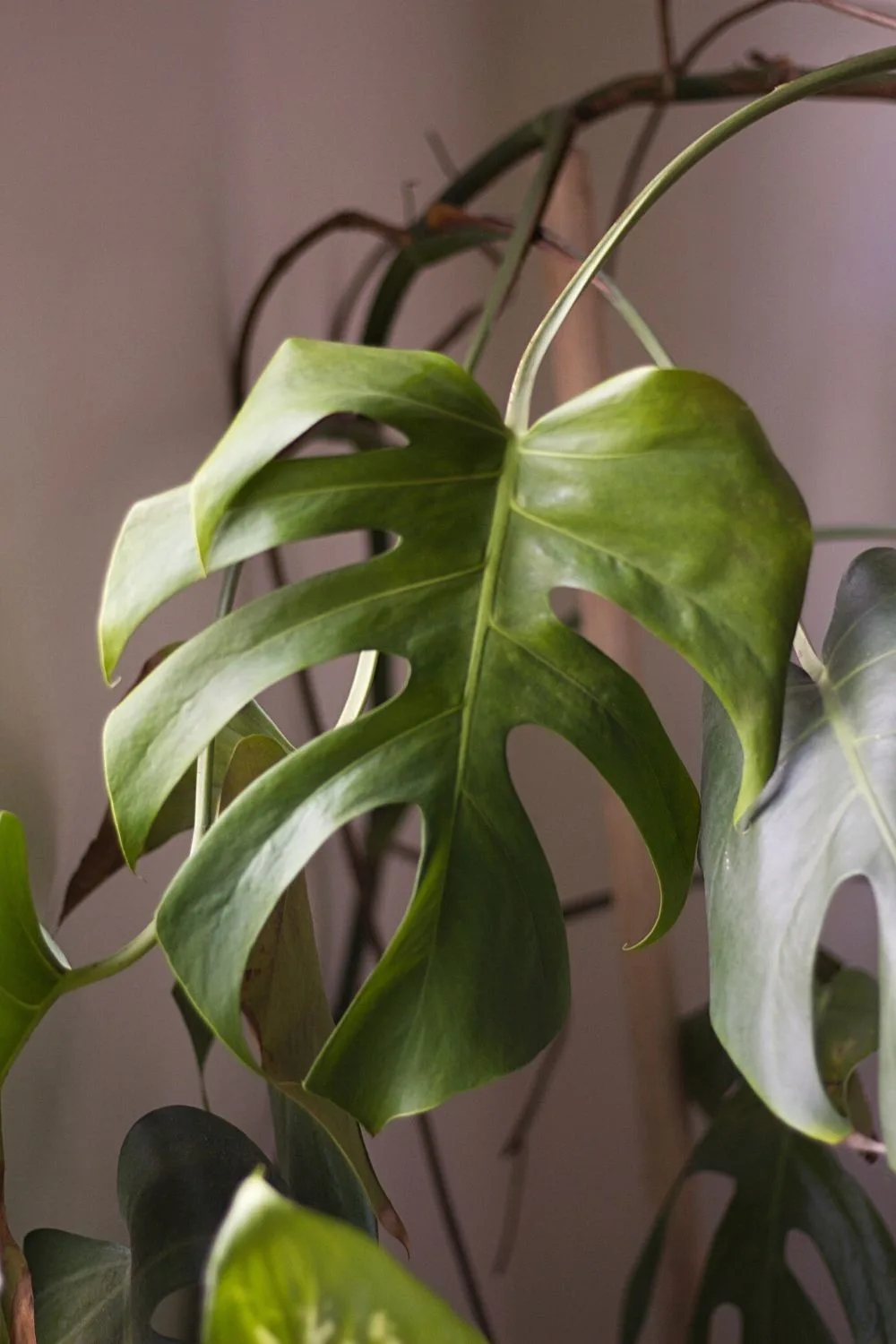
Swiss cheese plant is another plant that will thrive in the indirect light that northeast-facing windows provide
The Swiss cheese plant, botanically known as Monstera deliciosa, is another top favorite of numerous house gardeners.
This beauty has unique large, heart-like leaves that thrive in indirect sunlight and organic soils.
Naturally found in Panama and Mexico, these plants have perforations resembling cheese.
The leaves are quite sensitive due to thin membranes; therefore, northeast-facing windows indoors are ideal for the swiss cheese plant.
- Scientific name: Monstera deliciosa
- Light requirements: mild to moderate
- Watering requirements: low to moderate
- Growth rate: Moderate
- Temperature: 65 to 85 degrees Fahrenheit
- pH: 5.5 to 7
- Care: low to moderate
11. Maidenhair Fern
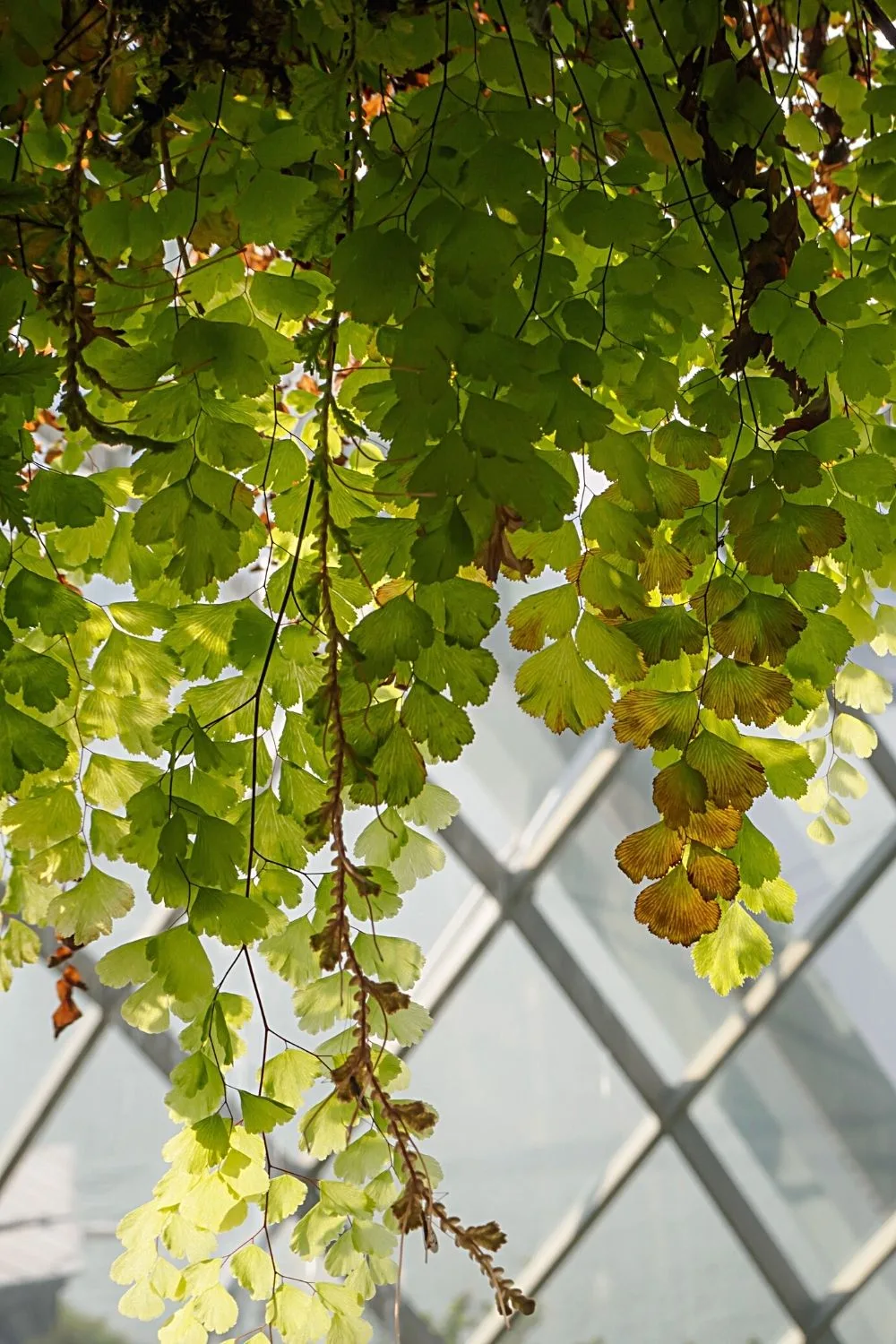
Maidenhair fern, known for its black roots that resemble hair, thrive best when placed by northeast-facing windows
Also called Adiantum, the Maidenhair fern is named after its black roots that resemble hair. The foliage is also pretty dainty, taking on the appearance of feathers with a light green tinge.
These ferns are common in North America, the Himalayas, and East Asia. Their habitat consists of filtered sunlight and fertile, organic soils.
Therefore, northeast-facing windows are just what they need to fulfill their light requirements.
Anything too direct will burn the leaves leading to the maidenhair fern plant’s collapse.
- Scientific name: Adiantum
- Light requirements: mild to moderate
- Watering requirements: low to moderate
- Growth rate: Moderate
- Temperature: 60 to 70 degrees Fahrenheit
- pH: 7.2 and higher
- Care: low to moderate
12. Nerve Plant
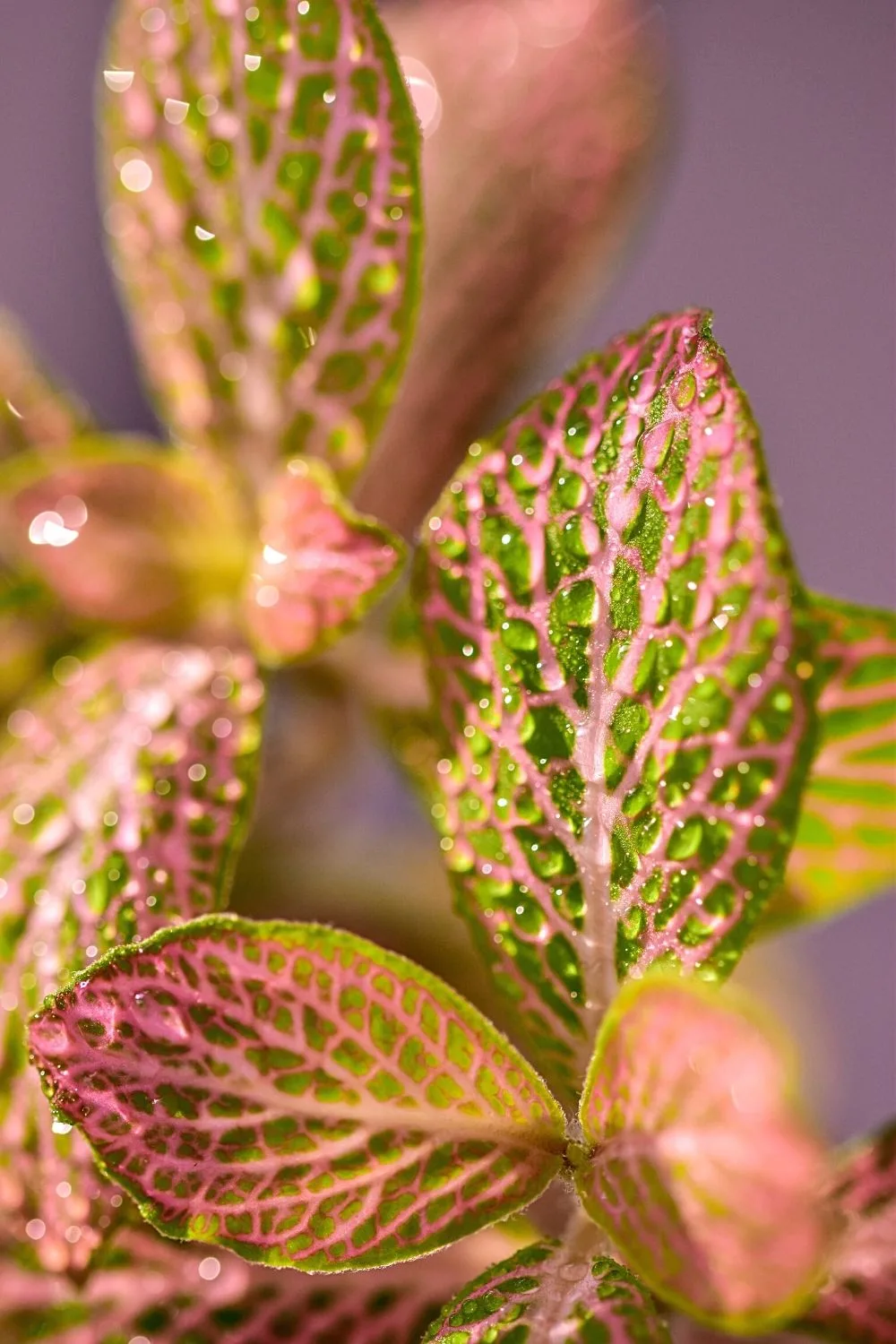
Nerve plant enjoys the bright and dappled sunlight in northeast-facing windows
This plant is as interesting as its name. It needs bright, dappled sunlight and occasional watering combined with fertile soils to grow optimally.
The plant takes its name from the nerves-like patterns, which are usually silvery-white in color. The contrasting leaves dazzled by the unique patterns will have you looking at it twice.
Even its botanical name, Albivensis, means white veins in Latin. However, some varieties do showcase a red hue instead of being white only.
- Scientific name: Albivensis
- Light requirements: mild to moderate
- Watering requirements: low to moderate
- Growth rate: Moderate
- Temperature: 65 to 80 degrees Fahrenheit
- pH: 6 to 7
- Care: low to moderate
13. Cyclamen
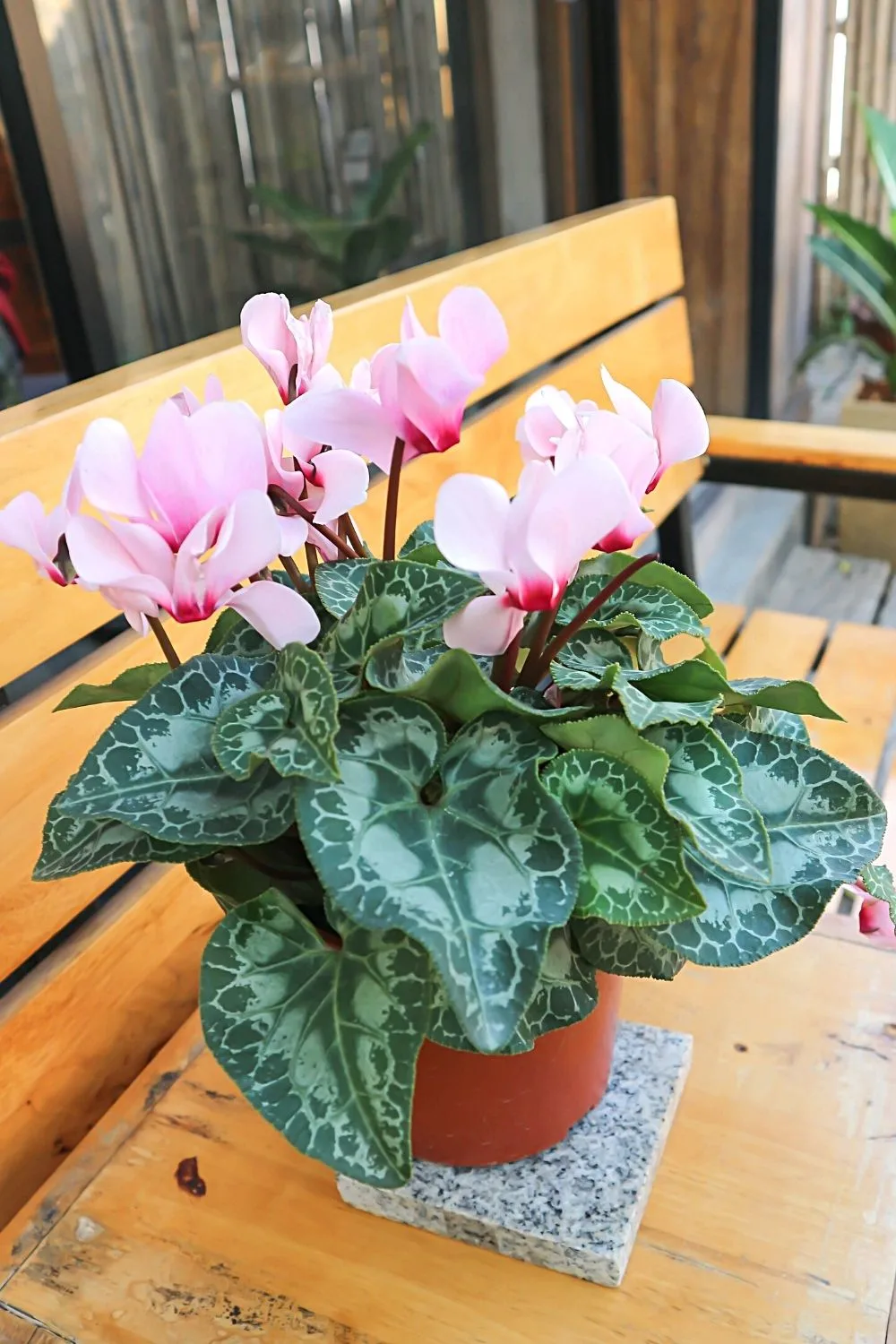
If you’re looking for an exotic plant to grow by your northeast-facing window, Cyclamen is one of your best choices
Next up, we have Cyclamen, a plant as exotic as its name. Its common names include Persian violet, Alpine violet, and Sowbread.
The genus is made up of over 20 species, all sharing a petite appearance. The flowers are fragrant, the leaves are small, and the stems are long and slender.
Overall, it’s a sophisticated plant that can make a statement easily.
Cyclamen produces flowers in different colors, such as red, purple, pink, and white. The leaves are heart-shaped and have a dainty look.
Place the Cyclamen in bright, indirect sunlight for the healthiest growth.
- Scientific name: Cyclamen
- Light requirements: mild to moderate
- Watering requirements: low to moderate
- Growth rate: Moderate
- Temperature: 40 to 70 degrees Fahrenheit
- pH: 5 to 6
- Care: low to moderate
14. Boston Fern
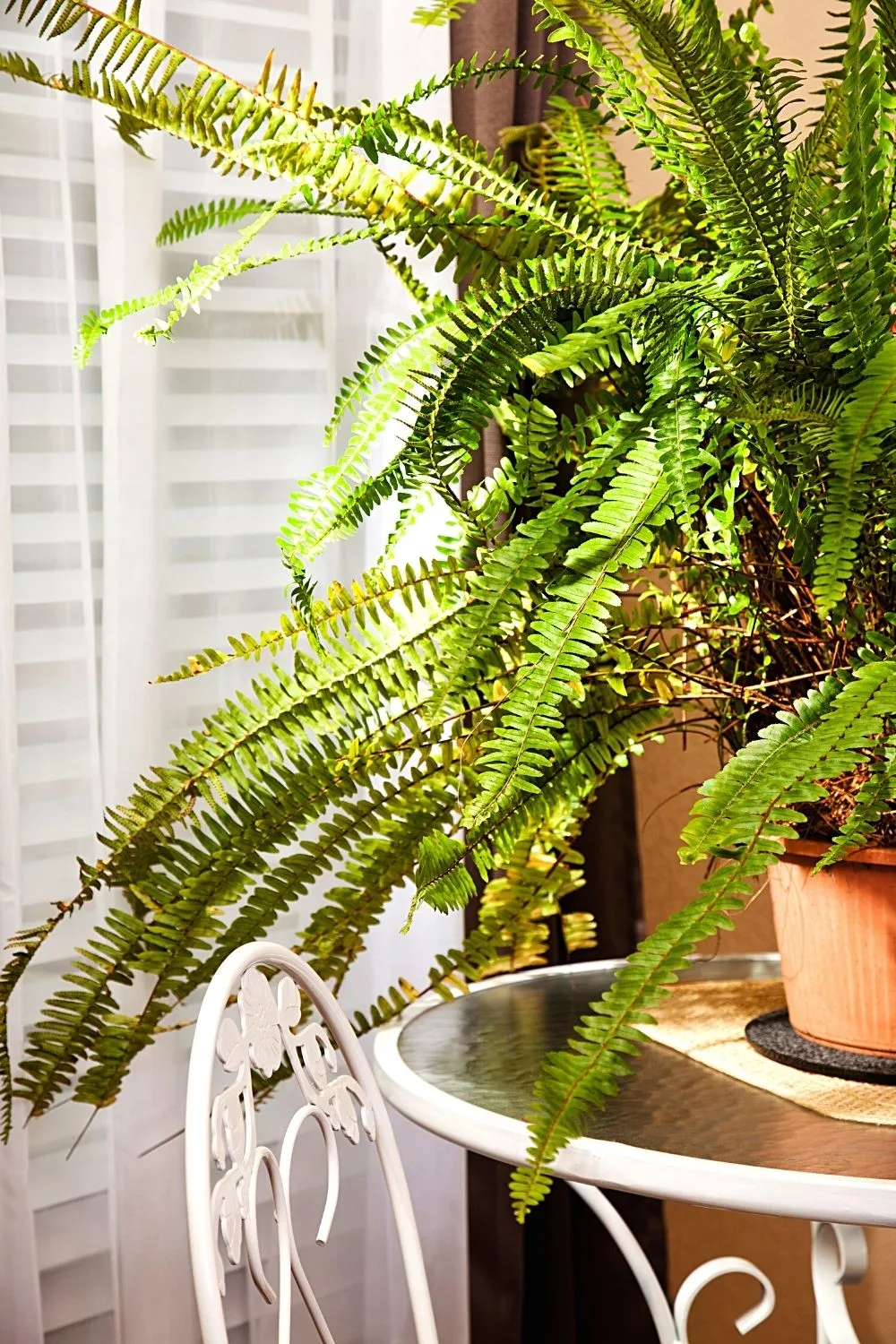
Boston fern, aka the Sword fern, also thrives when grown by northeast-facing windows
Another popular plant on this list is the Boston fern, also called Sword fern. The name is inspired by the plant’s leaves that resemble slender swords, only they are green and not metal.
The long ferns taper at the ends, completing a sword’s look.
The leaves are quick to shift from a bright green to a dull brown. Therefore, make sure you’re placing the plant in bright, dappled sunlight only, which prevents scorching.
- Scientific name: Nephrolepis exaltata
- Light requirements: mild to moderate
- Watering requirements: low to moderate
- Growth rate: Moderate
- Temperature: 65 to 95 degrees Fahrenheit
- pH: 5 to 5.5
- Care: low to moderate
15. Cast Iron Plant
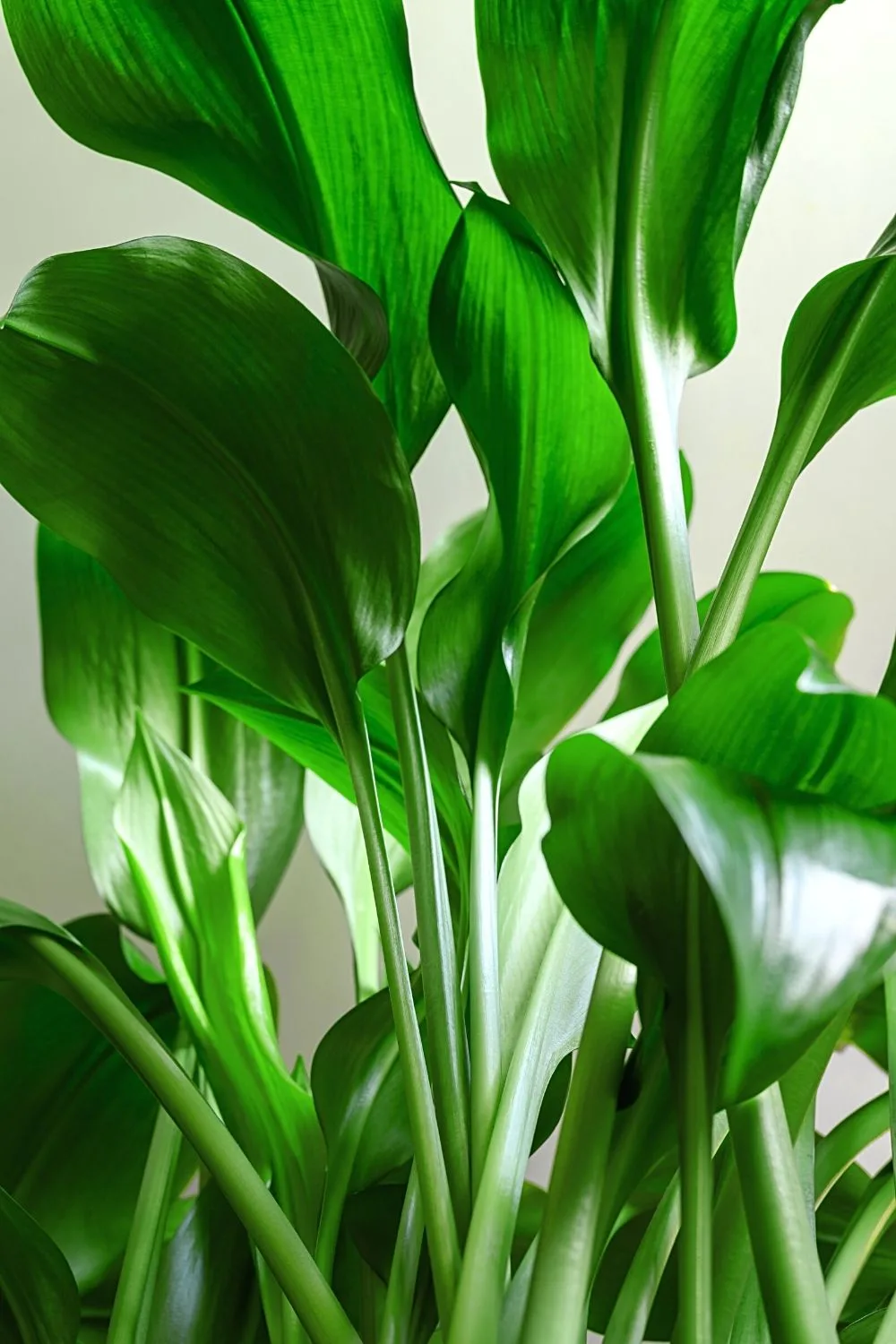
Cast iron plant is a sturdy plant that thrives when grown by northeast-facing windows
The Cast iron plant is among the best plants for northeast-facing windows. It is virtually indestructible, hence the name.
This hardy variety can survive a great number of unfavorable conditions, including insufficient sunlight and poor soil.
However, for a strong and healthy cast iron plant, grow it where there is filtered sunlight and fertile soil.
- Scientific name: Aspidistra Elatior
- Light requirements: mild to moderate
- Watering requirements: low to moderate
- Growth rate: slow
- Temperature: 45 to 85 degrees Fahrenheit
- pH: 5.5 to 7.5
- Care: low to moderate
16. Spider Plant
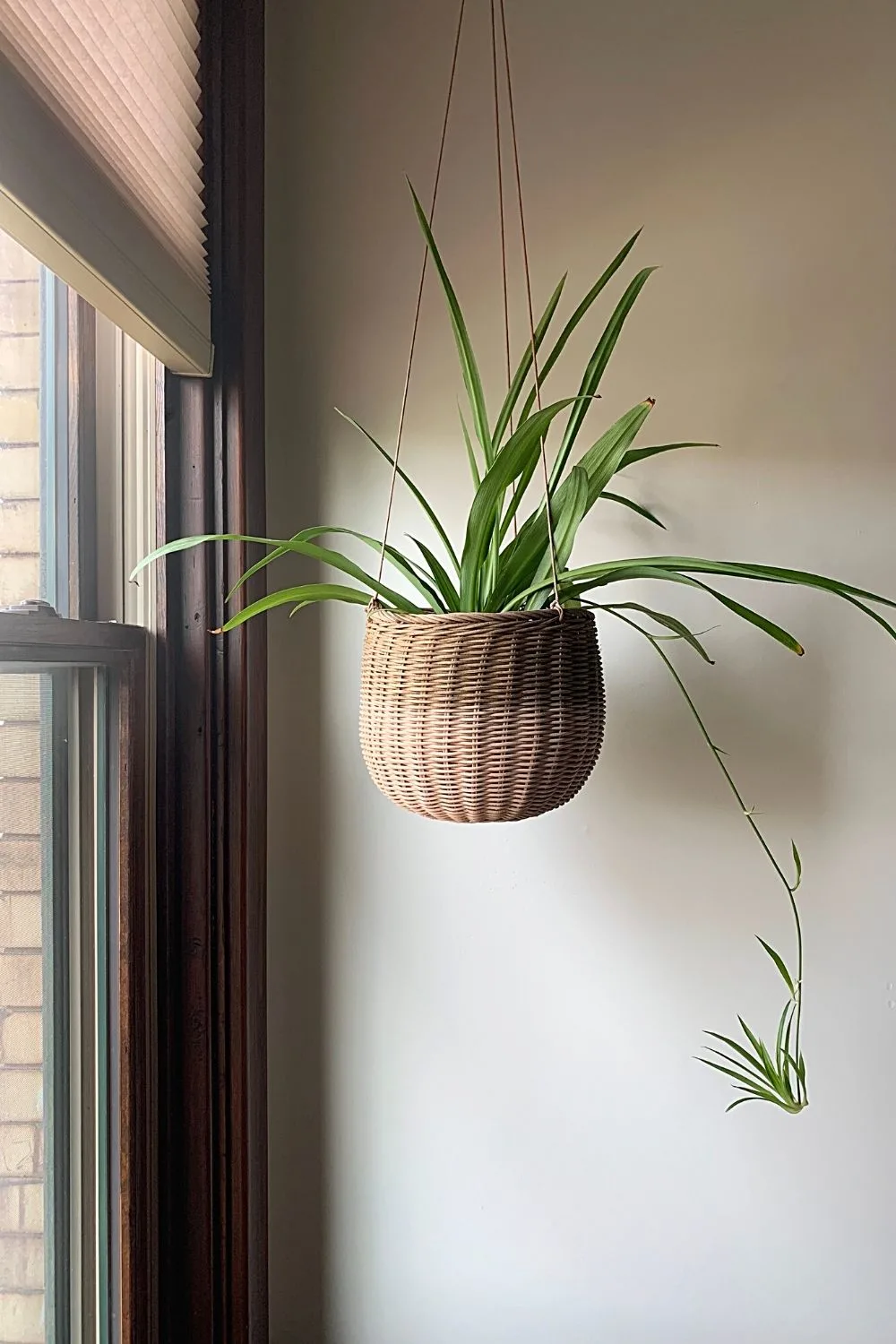
Spider plant looks best when grown in hanging baskets placed near northeast-facing windows
Next is the popular spider plant, also called Chlorophytum comosum botanically. They grow on long stems and give rise to white flowers when placed in favorable conditions.
Put them in hanging baskets to enhance their look. Furthermore, use chlorine-free water for these beauties and water regularly.
- Scientific name: Chlorophytum comosum
- Light requirements: mild to moderate
- Watering requirements: low to moderate
- Growth rate: Moderate
- Temperature: 60 to 75 degrees Fahrenheit
- pH: 6 to 6.5
- Care: low to moderate
17. Never Never Plant
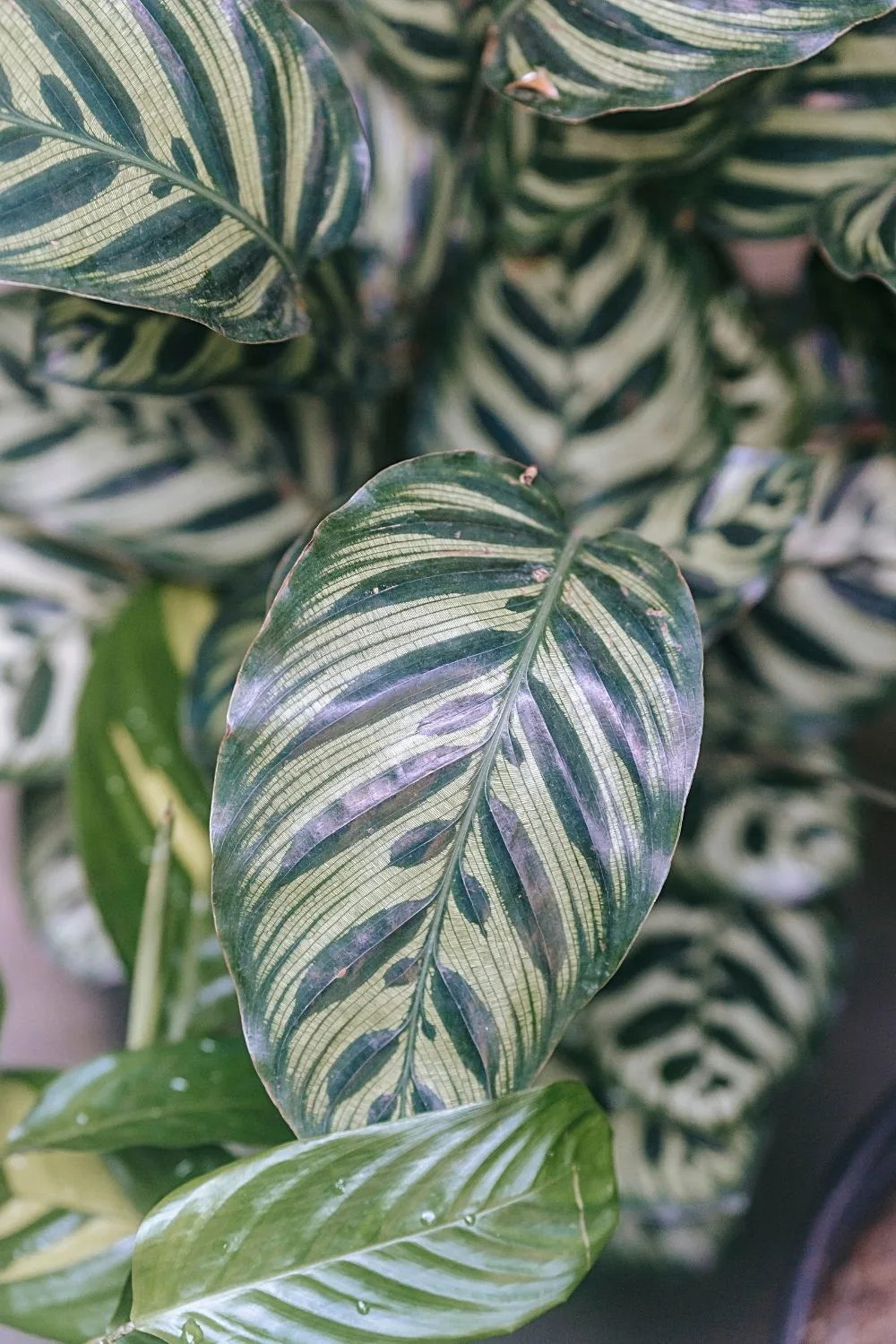
Never never plant is another easy-to-care for plant that you can grow near northeast-facing windows
Please do not be discouraged by this plant’s name. This will be a wonderful addition to your houseplants collection due to its easy care routine and widely adapting nature.
It enjoys humid and warm environments along with weekly watering. In the ideal conditions, it gives rise to oval leaves that have pretty white or yellow patterns with deep purple stems and undersides.
Place it in filtered sunlight for optimal growth.
- Scientific name: Ctenanthe
- Light requirements: mild to moderate
- Watering requirements: low to moderate
- Growth rate: Moderate
- Temperature: 55 to 85 degrees Fahrenheit
- pH: 6.1 to 7.3
- Care: low to moderate
18. Bird’s Nest Fern
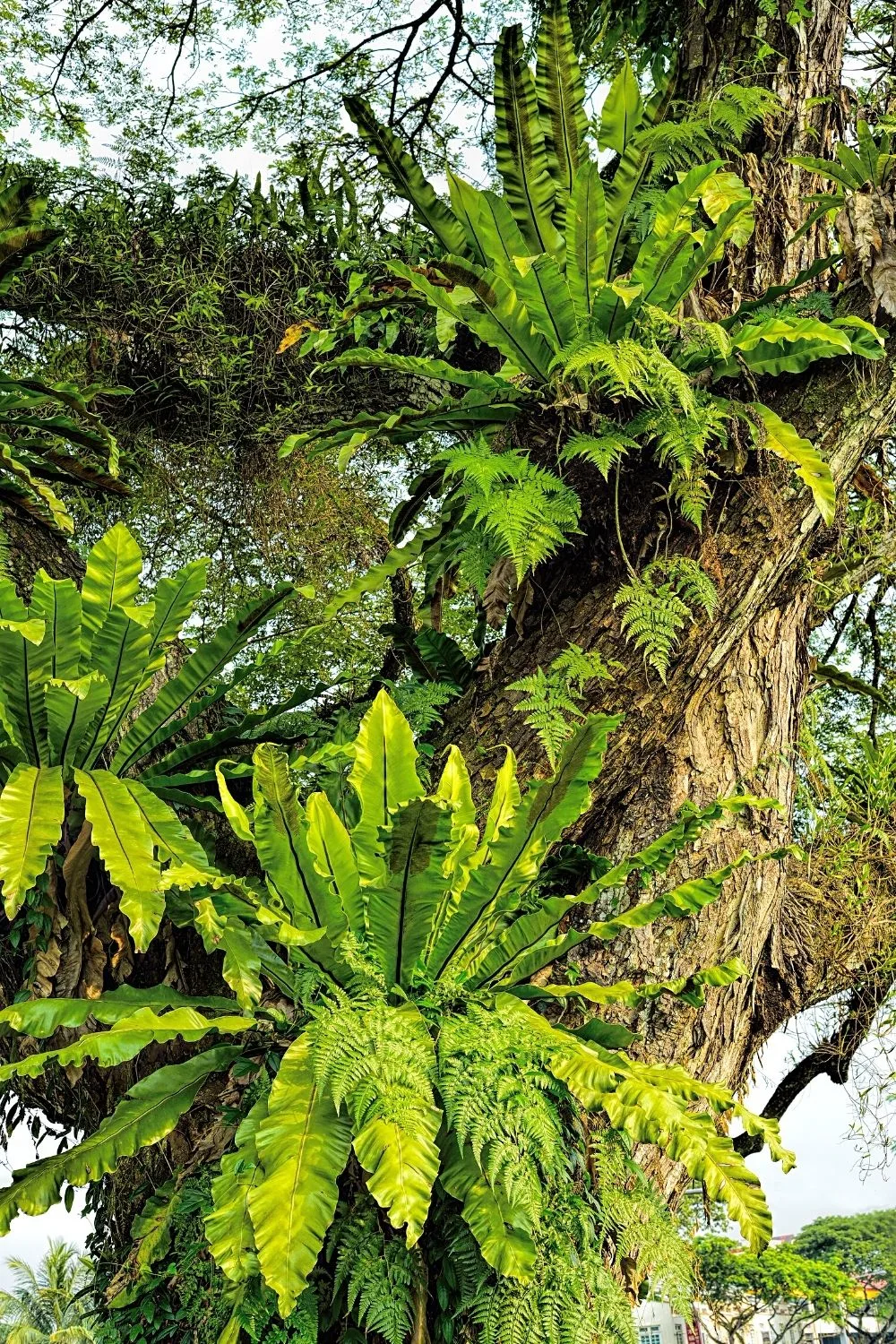
Since Bird’s nest ferns grow with their roots attached to trees, they thrive in the indirect light they’re receiving when grown near northeast-facing windows
This interesting plant will have you looking at it for a considerable number of minutes. It has unique lance-shaped rosette fronds that attract a lot of attention.
These epiphytes grow with their roots attached to the trees’ sides in their natural habitat, so they aren’t used to direct sunlight or similar harsh conditions.
Natives of Asia, Africa, and Australia, Bird’s nest fern plant like mildly acidic soils, filtered sunlight, and frequent watering.
- Scientific name: Asplenium Nidus
- Light requirements: mild to moderate
- Watering requirements: low to moderate
- Growth rate: Moderate
- Temperature: 60 to 80 degrees Fahrenheit
- pH: 5 to 7
- Care: low to moderate
19. Umbrella Tree
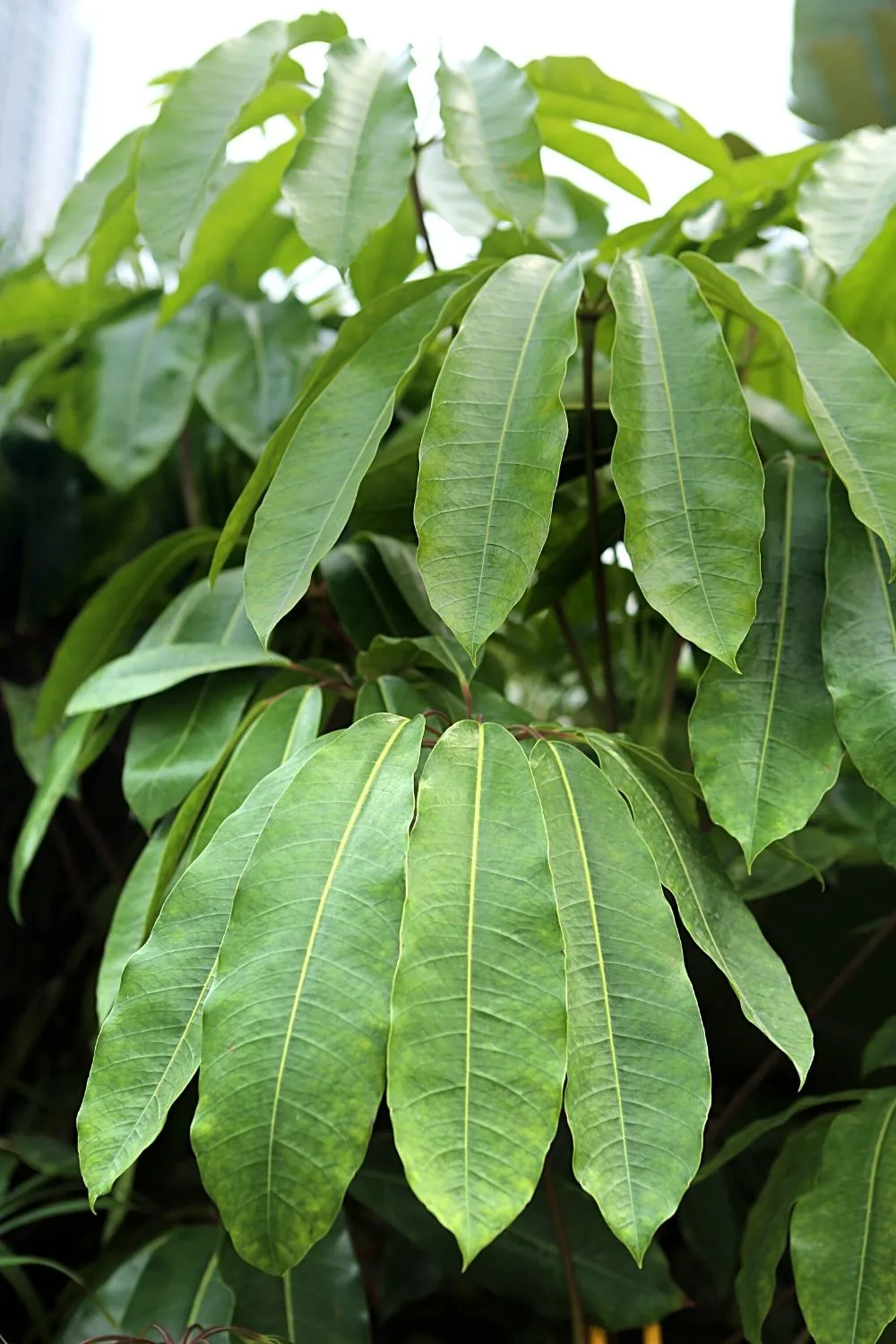
Umbrella tree, with its foliage fanning out like an umbrella, thrive when grown near northeast-facing windows
This tropical beauty is your usual house entrance plant with bright green and glossy leaves. The foliage fans out similar to an umbrella, hence the name.
It likes acidic soil mixes, mild temperatures, and plenty of indirect sunlight.
- Scientific name: Schefflera actinophylla
- Light requirements: mild to moderate
- Watering requirements: low to moderate
- Growth rate: Moderate
- Temperature: 65 to 85 degrees Fahrenheit
- pH: 6 to 6.5
- Care: low to moderate
20. Red Begonia
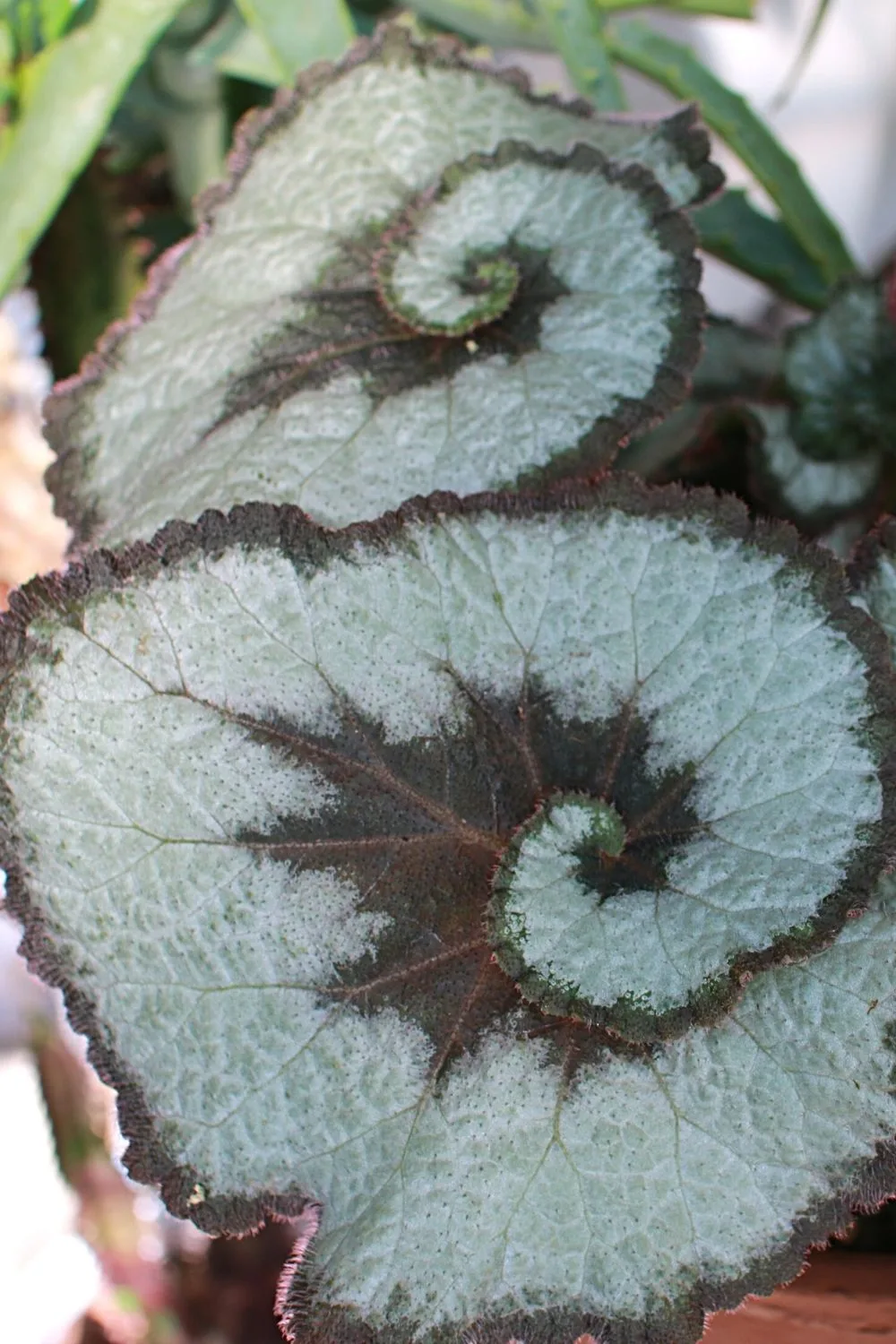
Red begonia also has stunning foliage that can easily beautify your northeast-facing window
The begonias are popular for their pretty flowers, and the same is the case for red begonia.
It has showy bright flowers, but the prime reason for its popularity is its stunning foliage, which may be greed, purple, or deep red, further enhanced by intricate silver details.
- Scientific name: Begonia rex-cultorum
- Light requirements: mild to moderate
- Watering requirements: low to moderate
- Growth rate: Moderate
- Temperature: 60 to 70 degrees Fahrenheit
- pH: 6 to 7
- Care: low to moderate
21. Baby Rubber Plant
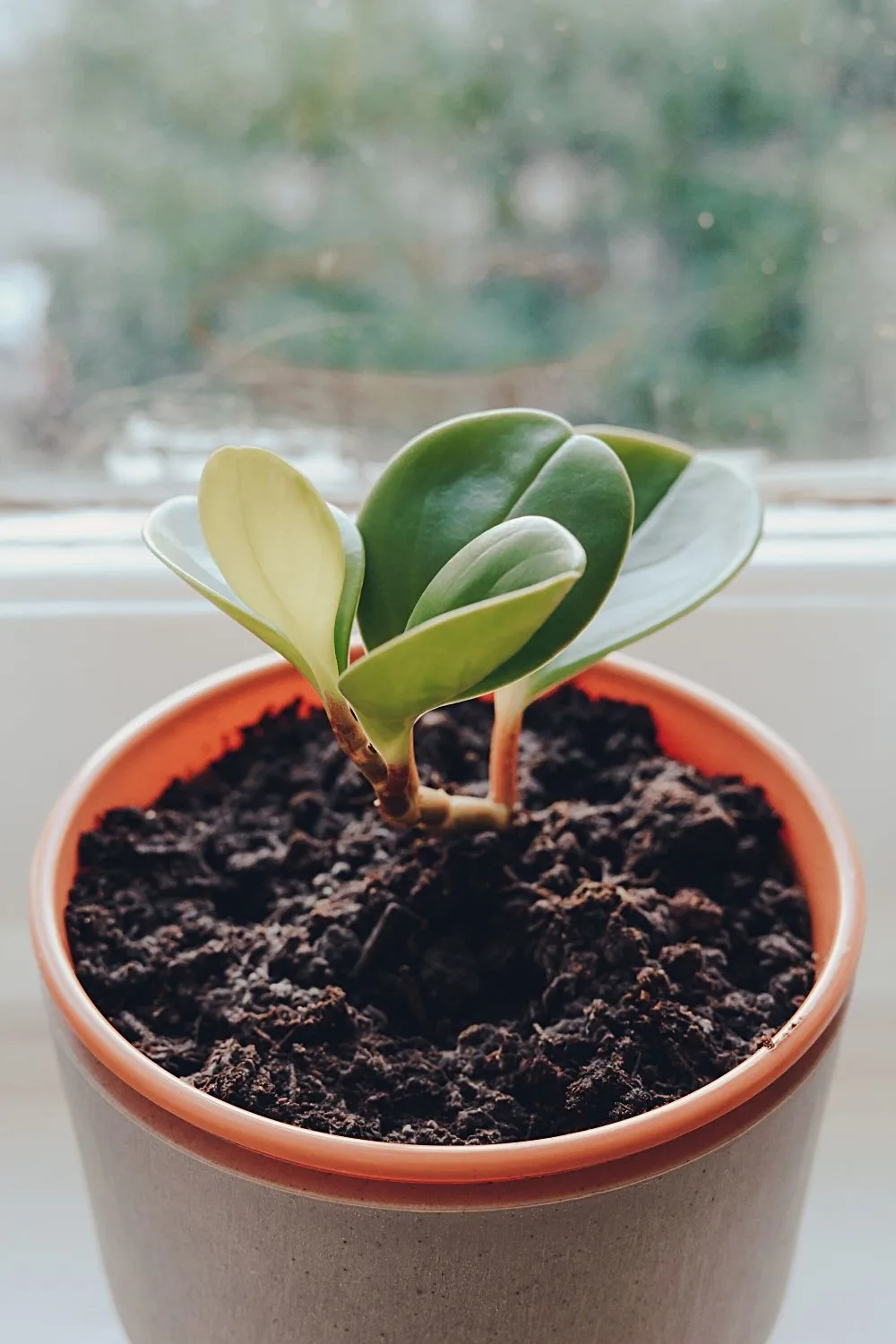
Baby rubber plant loves the bright dappled light that northeast-facing windows provide
The baby rubber plant is on this list as it loves bright, dappled sunlight, as offered by northeast-facing windows.
This succulent is a South American native with showy coin-like foliage. The plant is believed to bring prosperity, wealth, and good fortune.
- Scientific name: Peperomia obtuifolia
- Light requirements: mild to moderate
- Watering requirements: low to moderate
- Growth rate: Moderate
- Temperature: 65 to 75 degrees Fahrenheit
- pH: 6 to 6.6
- Care: low to moderate
22. Pothos Jade
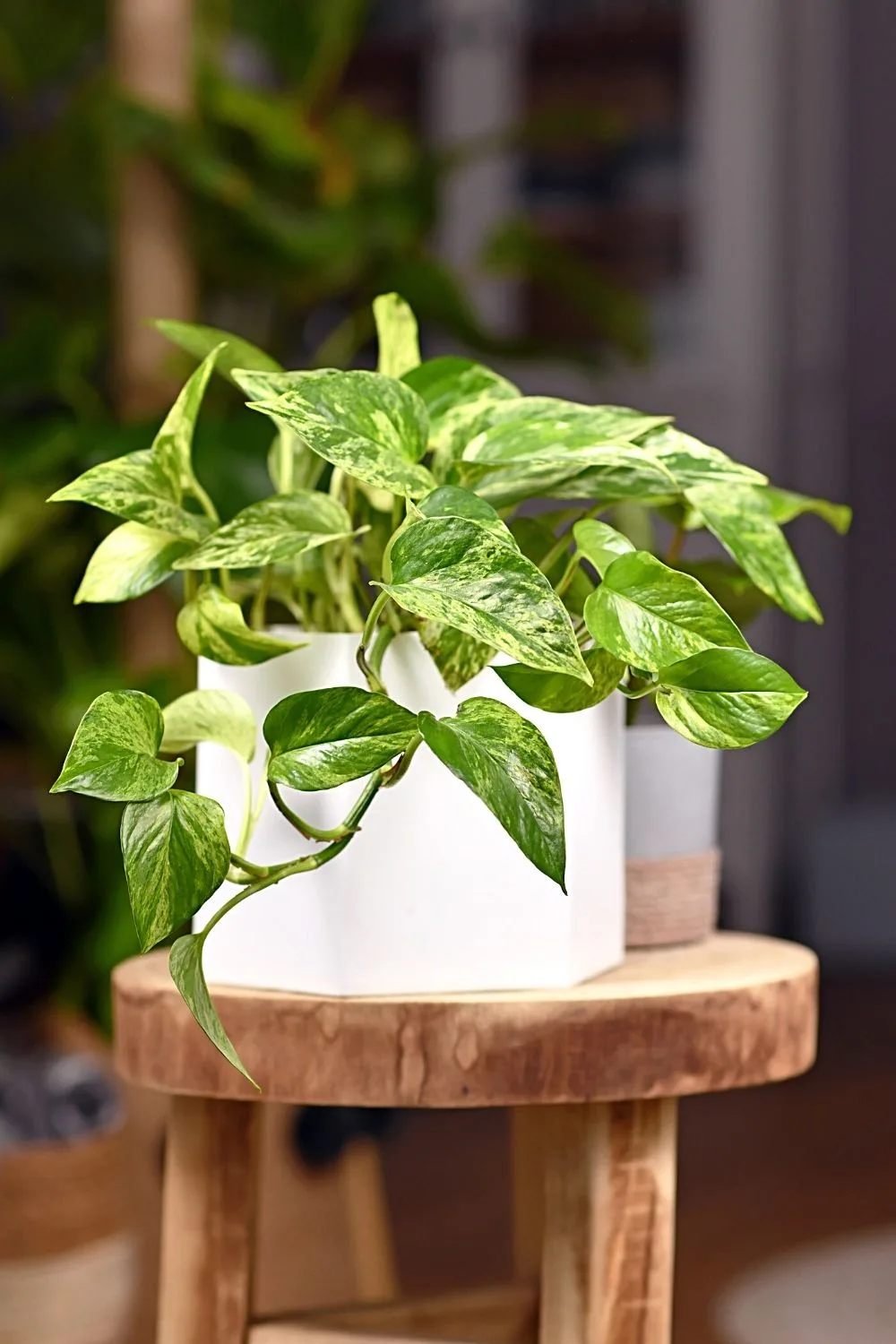
Pothos jade is a trailing plant that can beautify northeast-facing windows
This one looks lovely as a trailing plant with its bright green foliage that adds color to the dullest corners.
However, you may have to use artificial hormonal stimulation to flower a jade plant. Other than that, its common names include ivy arum and hunter robe.
It’s a robust plant with a tough nature and is almost impossible to kill.
- Scientific name: Epipremnum aureum
- Light requirements: mild to moderate
- Watering requirements: low to moderate
- Growth rate: moderate
- Temperature: 65 to 85 degrees Fahrenheit
- pH: 6.1 to 6.5
- Care: low to moderate
23. Dracaena Lisa Cane
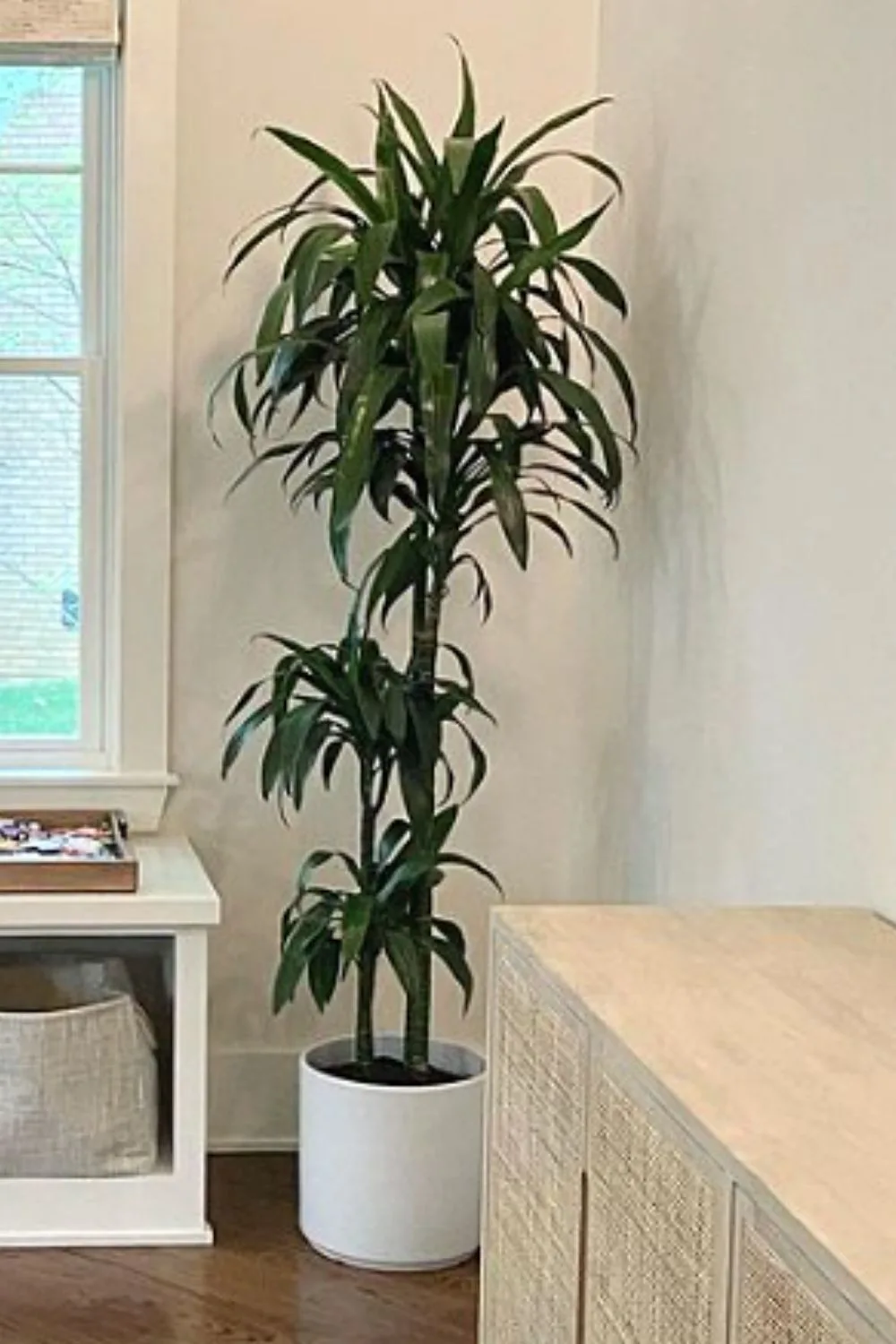
Photo Credit: @overgrown_bk on Instagram!
Another beauty that you need to add to your houseplants collection is the Dracaena Lisa cane. This one has dark green foliage lined by yellow or pale green borders.
It is also referred to as a corn plant as its features are similar to a tree.
The leaves are glossy with skinny and tubular trunks. Grow the Dracaena Lisa plant in indirect sunlight to maintain its fresh colors.
- Scientific name: Dracaena Lisa
- Light requirements: mild to moderate
- Watering requirements: low to moderate
- Growth rate: Moderate
- Temperature: 65 to 75 degrees Fahrenheit
- pH: 6 to 6.5
- Care: low to moderate
24. Benjamin Fig
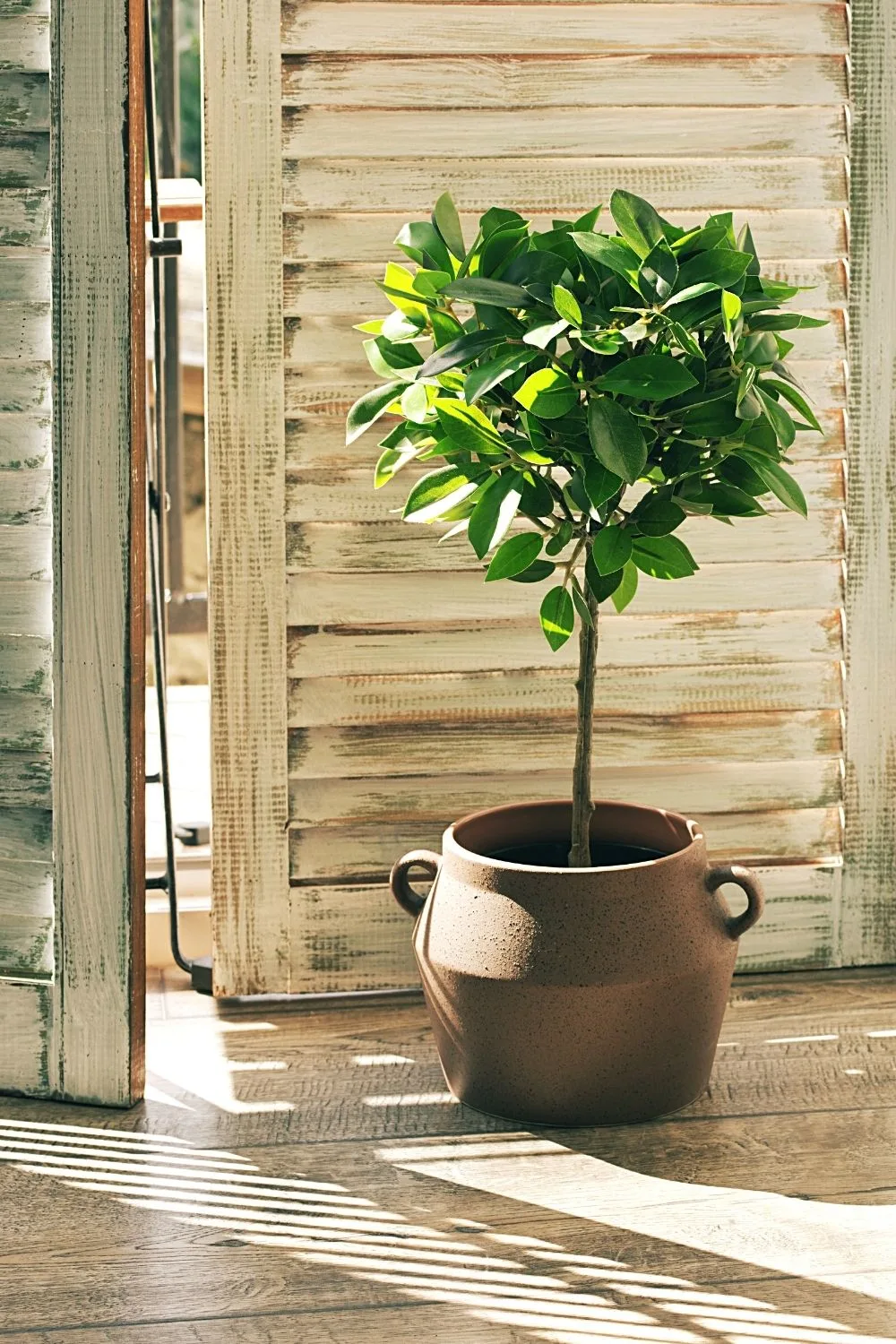
Benjamin fig will thrive when placed by northeast-facing windows
Another popular houseplant is the Benjamin fig. It is also called the Weeping fig and Ficus tree due to its appearance.
The plant is a native of Australia and Asian lands as well as Bangkok, and so it likes warm, temperate conditions.
It produces orangish-red fruit when in an ideal environment, which includes bright, filtered sunlight.
It will look stunning next to a northeast-facing window with its slender trunks, fluttering and delicate foliage, and air-purifying abilities.
- Scientific name: Ficus Benjamina
- Light requirements: mild to moderate
- Watering requirements: low to moderate
- Growth rate: Moderate
- Temperature: 65 to 70 degrees Fahrenheit
- pH: 6.5 to 7
- Care: low to moderate
25. English Ivy
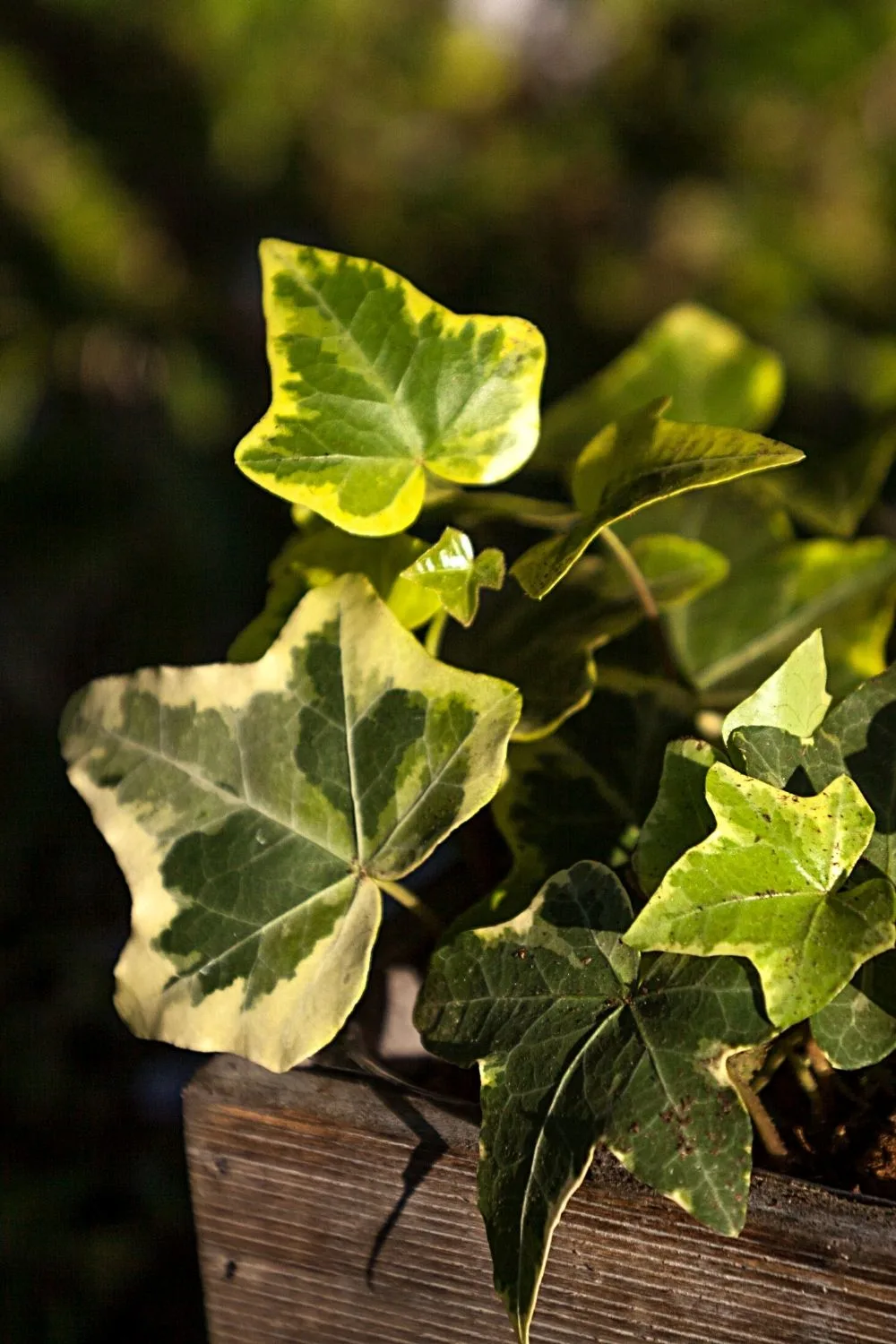
English ivy is a common ivy plant that you can add to your growing northeast-facing window plant collection
English ivy, or hedera helix, is a common ivy that will complete your houseplants collection.
Its trailing evergreen vines grow exceptionally well in front of northeast-facing windows, especially when hanging from baskets, planters, and similar decorations.
Apart from great aesthetic value, it also removes harmful toxins from your house, purifying the air considerably.
- Scientific name: Hedera helix
- Light requirements: mild to moderate
- Watering requirements: low to moderate
- Growth rate: fast
- Temperature: 65 to 85 degrees Fahrenheit
- pH: 6 to 7
- Care: low to moderate
26. Staghorn Ferns
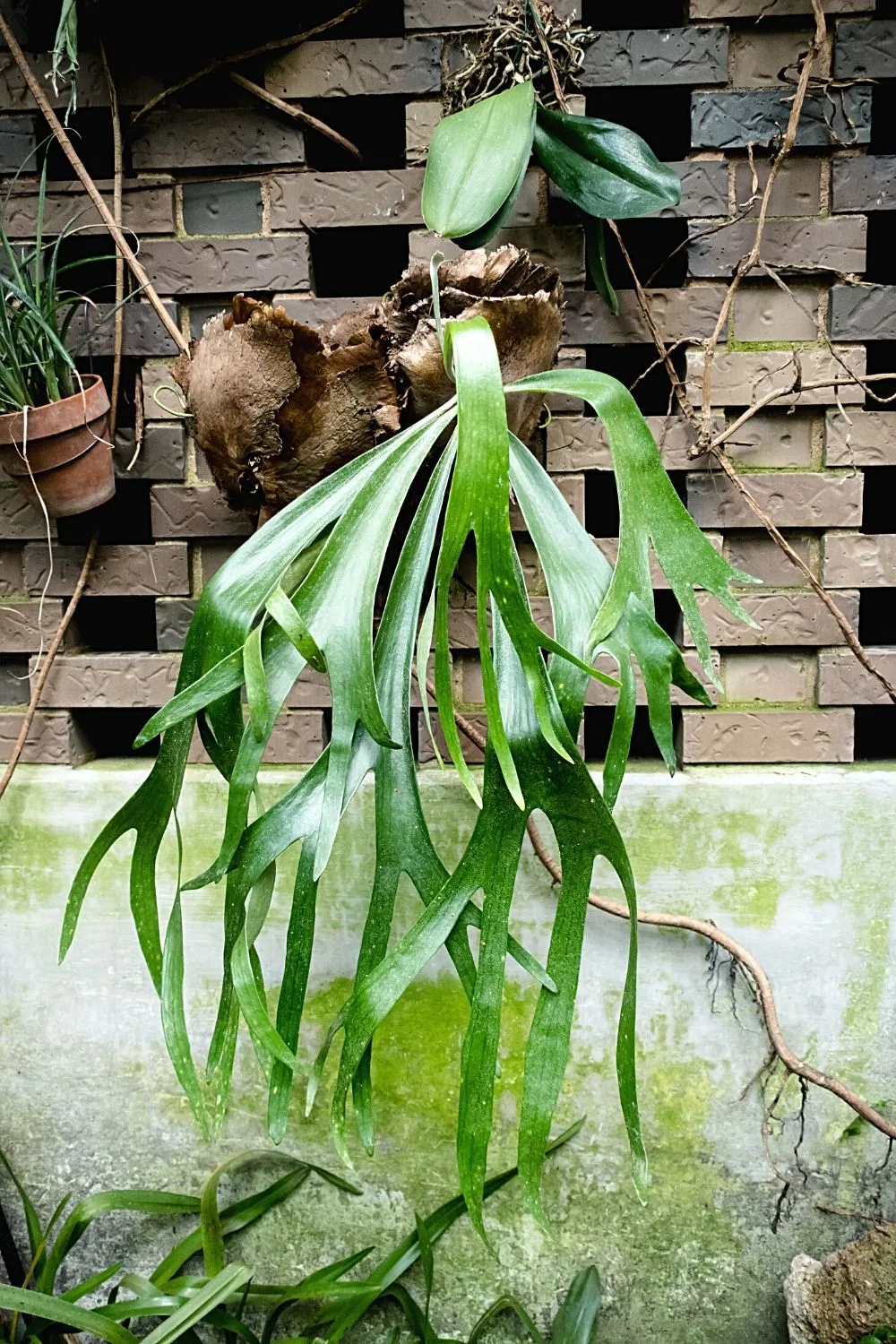
Staghorn fern enjoys the filtered sunlight that northeast-facing windows provide
Another type of ferns suitable for northeast windows is staghorn ferns.
These plants enjoy filtered sunlight along with fertile soils with moss and occasional watering.
- Scientific name: Platycerium
- Light requirements: mild to moderate
- Watering requirements: low to moderate
- Growth rate: Moderate
- Temperature: 50 degrees Fahrenheit and above
- pH: 6 to 7
- Care: low to moderate
27. Gardenia
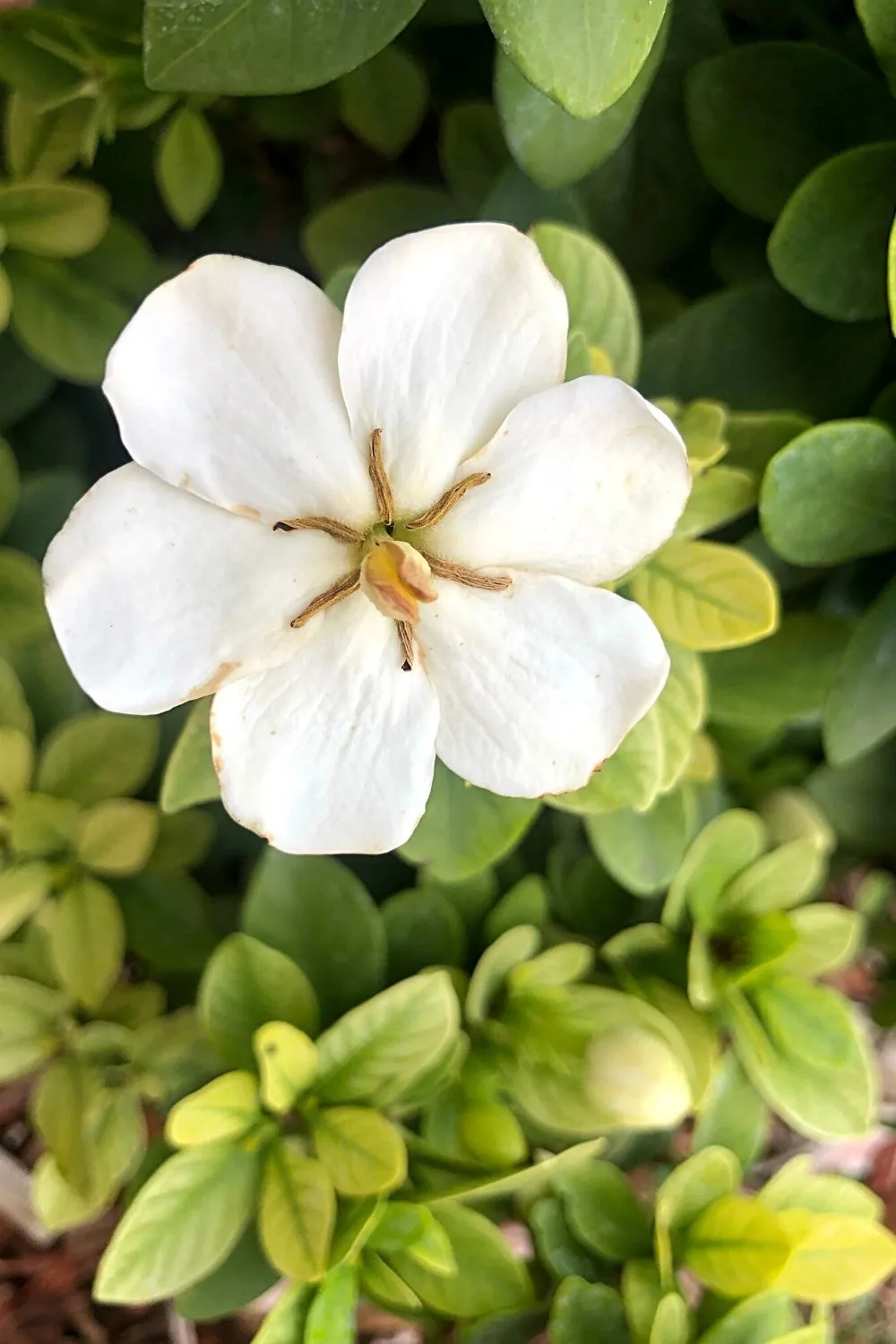
Gardenia, with its green foliage and white flowers, can easily beautify your northeast-facing window
One of the most elegant plants you will grow is the gardenia. This beauty has fresh and vibrant green leaves with white flowers that make a wonderful statement.
They bloom in the winters and have 5 to 12 lobes that appear from early summers to mid-spring.
- Scientific name: Gardenia jasminoides
- Light requirements: mild to moderate
- Watering requirements: low to moderate
- Growth rate: Moderate
- Temperature: 60 to 65 degrees Fahrenheit
- pH: 5 to 6.5
- Care: low to moderate
28. Pilea Peperomiodes
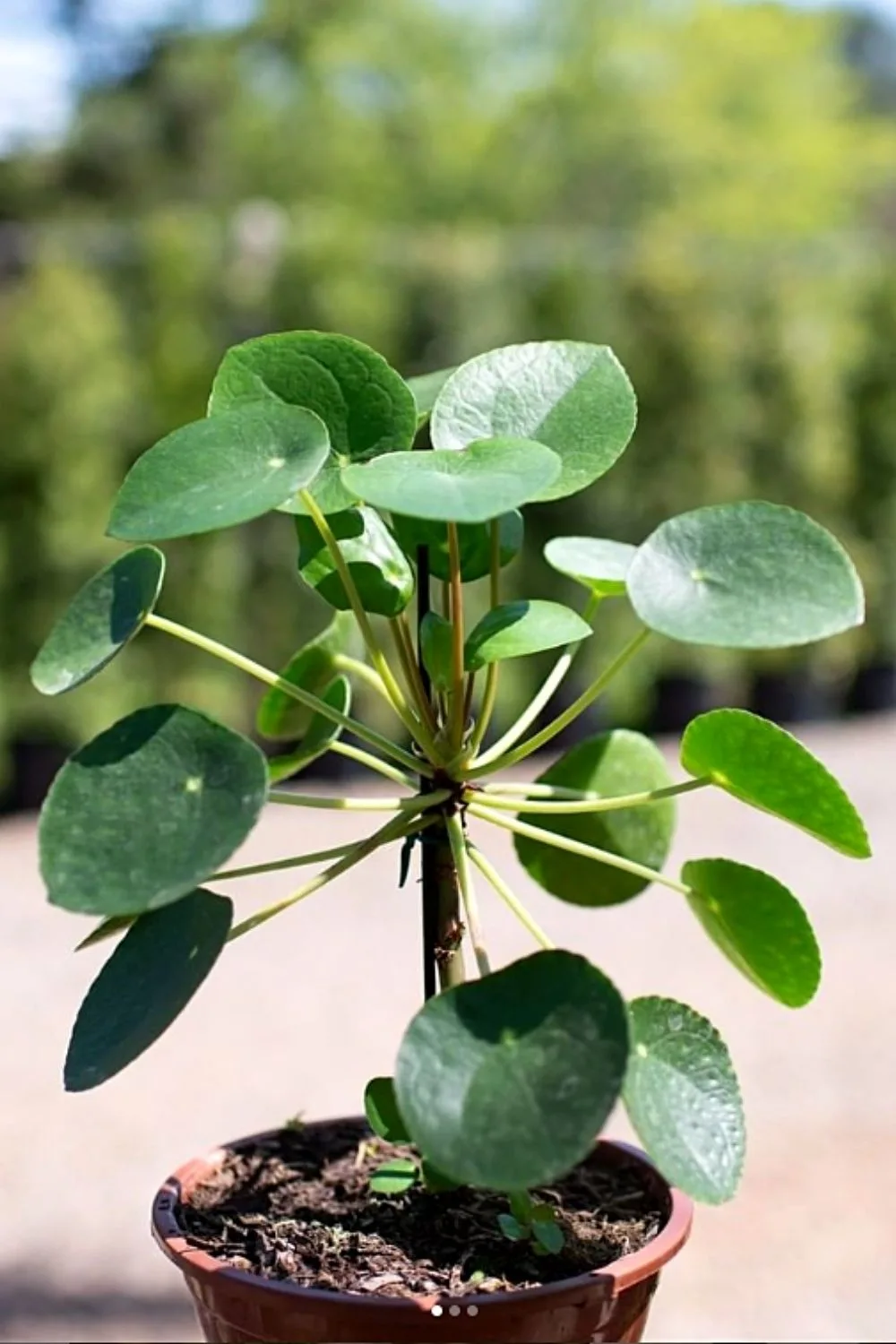
Photo Credit: @madretierrafloricultura on Instagram
The Pilea peperomiodes, also called the missionary plant, is a low-growing beauty with attractive-looking fresh leaves.
Choose a brightly lit area for this one.
- Scientific name: Pilea peperomiodes
- Light requirements: mild to moderate
- Watering requirements: low to moderate
- Growth rate: Moderate
- Temperature: 60 to 80 degrees Fahrenheit
- pH: 6 to 7
- Care: low to moderate
29. Alocasia x Amazonica Polly
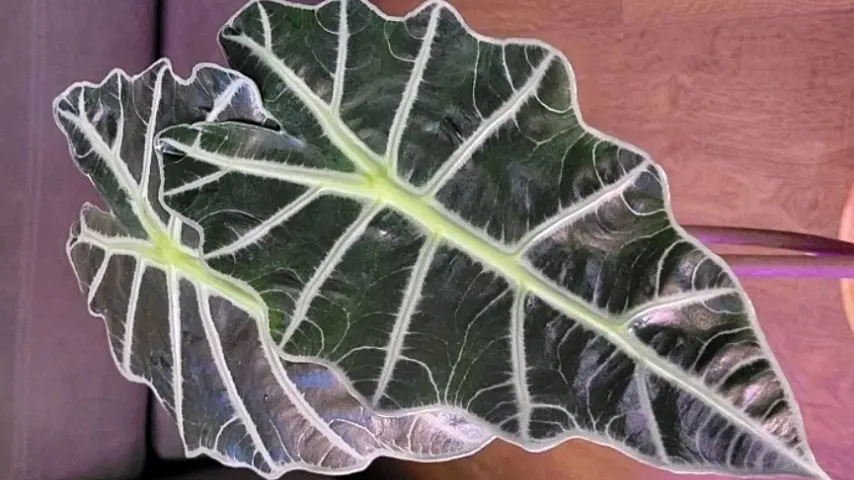
Photo Credit: @lil_piggs_plants on Instagram!
Another interesting plant with glossy, veiny leaves that thrives in filtered sunlight offered by northeast-facing windows.
- Scientific name: Alocasia x Amazonica Polly
- Light requirements: mild to moderate
- Watering requirements: low to moderate
- Growth rate: Moderate
- Temperature: 60 degrees Fahrenheit and above
- pH: 5.5 to 6.5
- Care: low to moderate
30. Streptocarpus
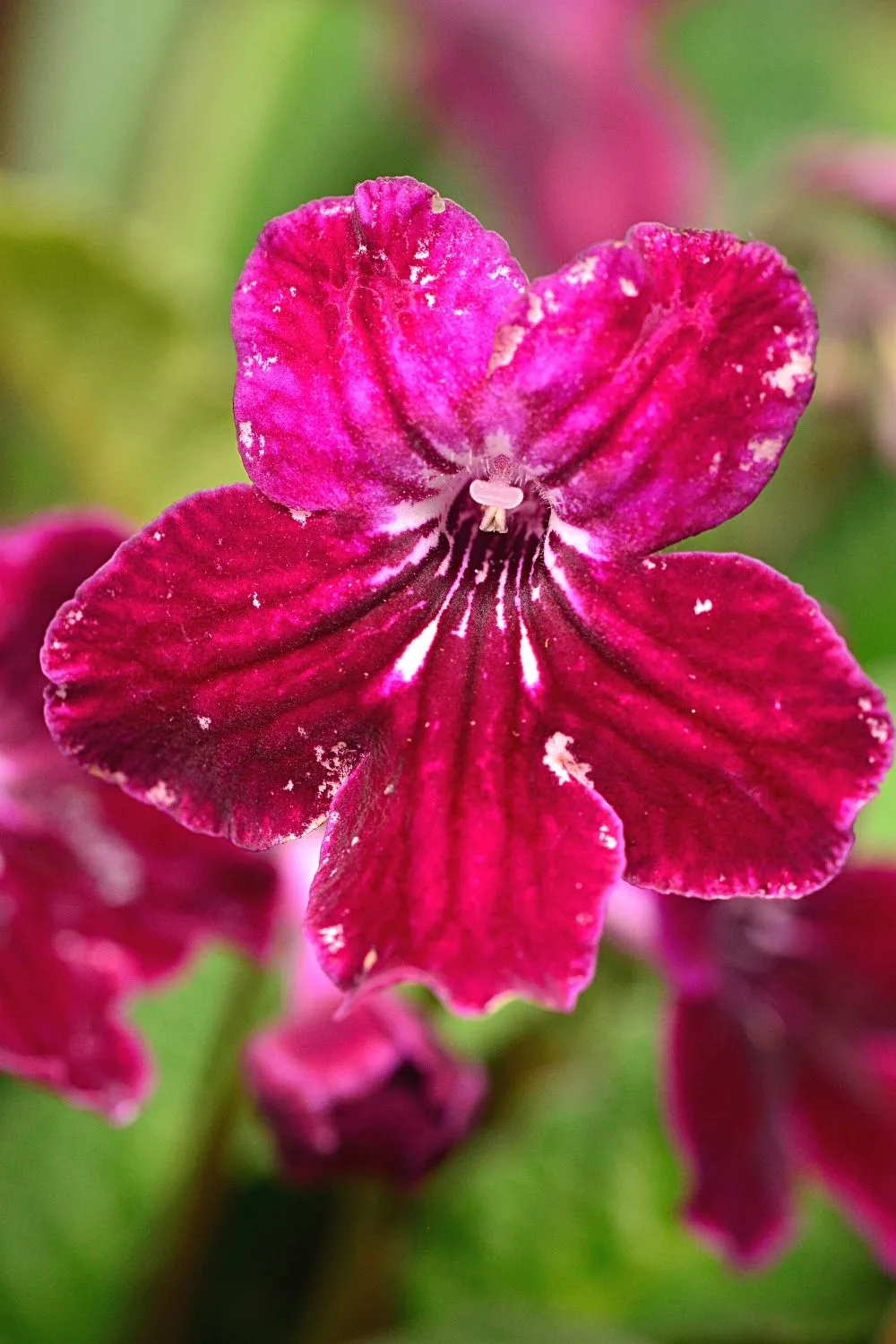
Another gorgeous plant you can grow by your northeast-facing window is the Streptocarpus
Grow this south African native in front of northeast-facing windows to enjoy some lovely violet-colored blooms.
- Scientific name: Streptocarpus
- Light requirements: mild to moderate
- Watering requirements: low to moderate
- Growth rate: Moderate
- Temperature: 60 to 65 degrees Fahrenheit
- pH: 5.8 to 6
- Care: low to moderate
Recommended read: A list of houseplants that are neon.

Daniel has been a plant enthusiast for over 20 years. He owns hundreds of houseplants and prepares for the chili growing seasons yearly with great anticipation. His favorite plants are plant species in the Araceae family, such as Monstera, Philodendron, and Anthurium. He also loves gardening and is growing hot peppers, tomatoes, and many more vegetables.

